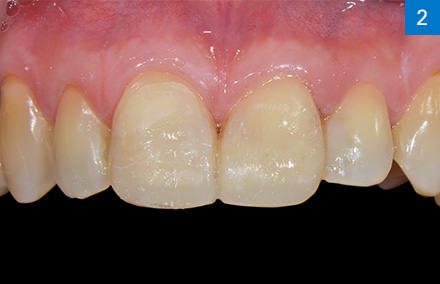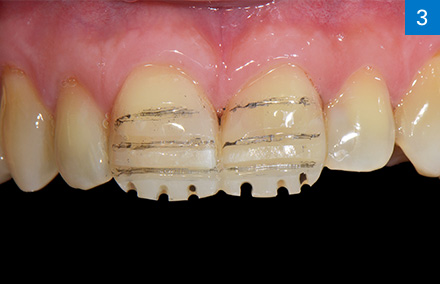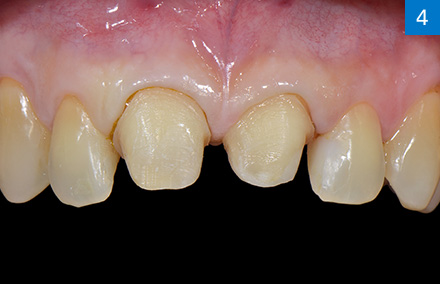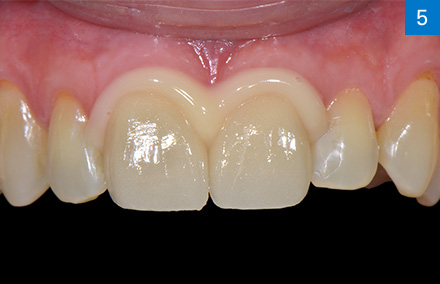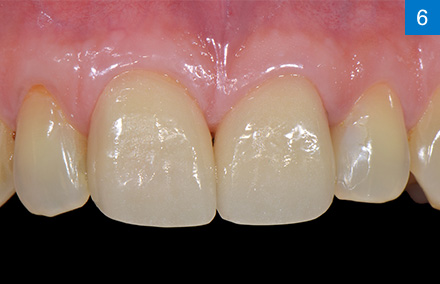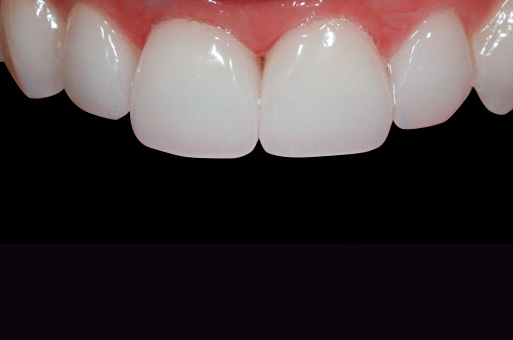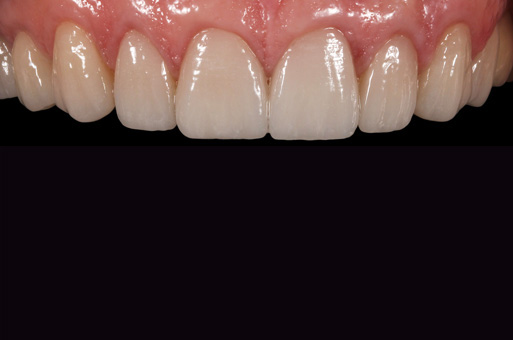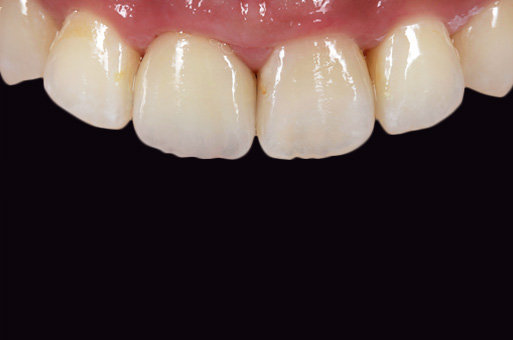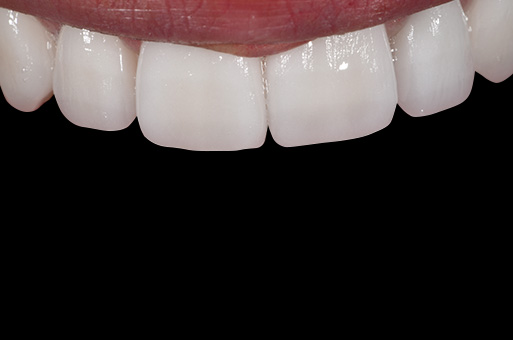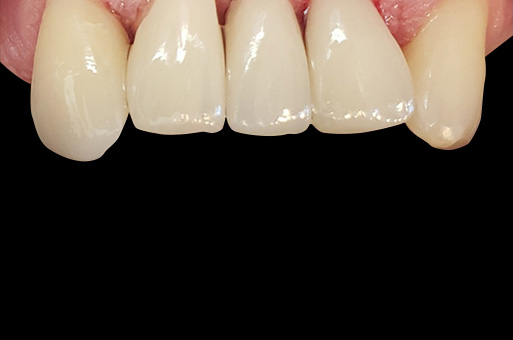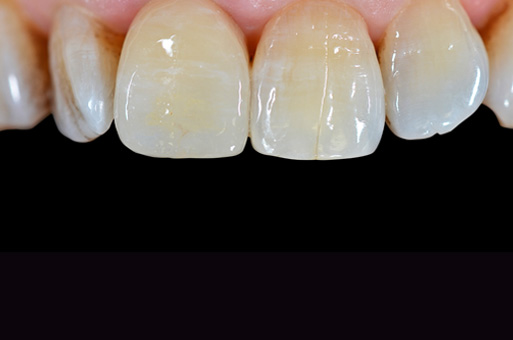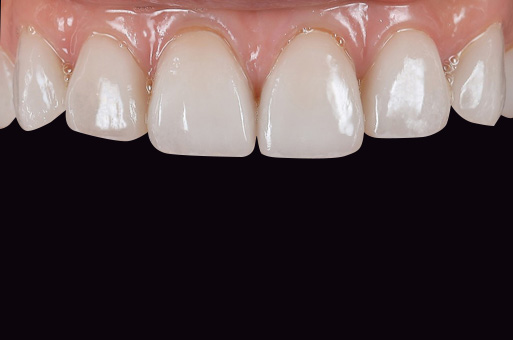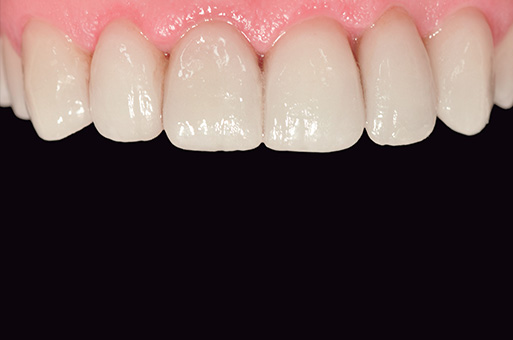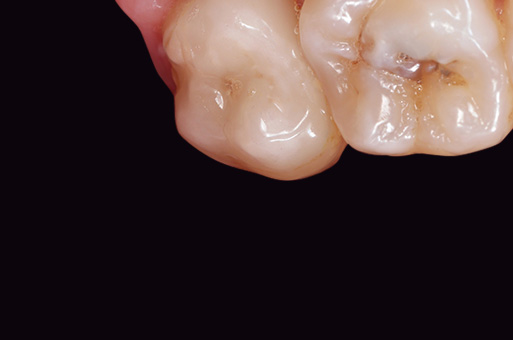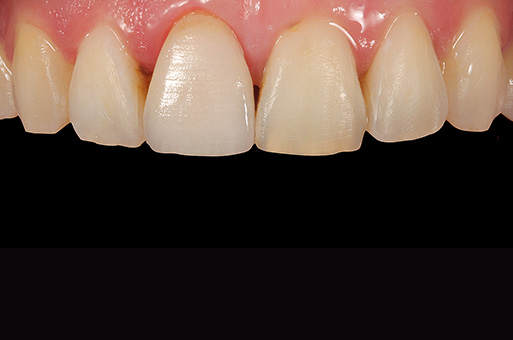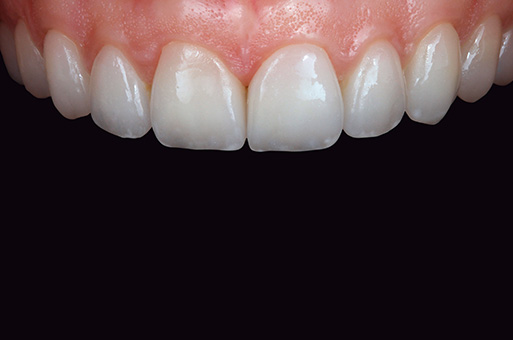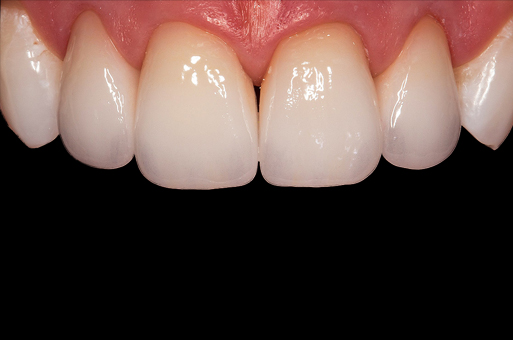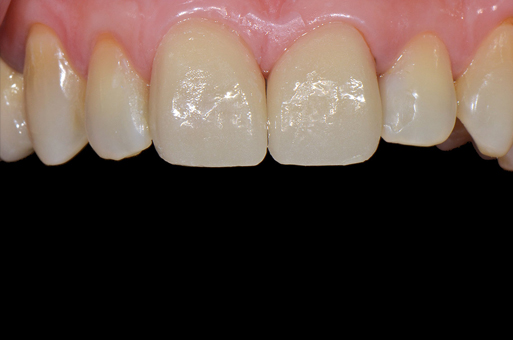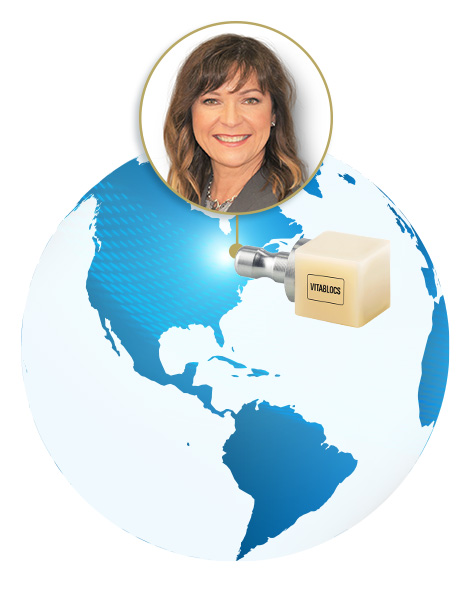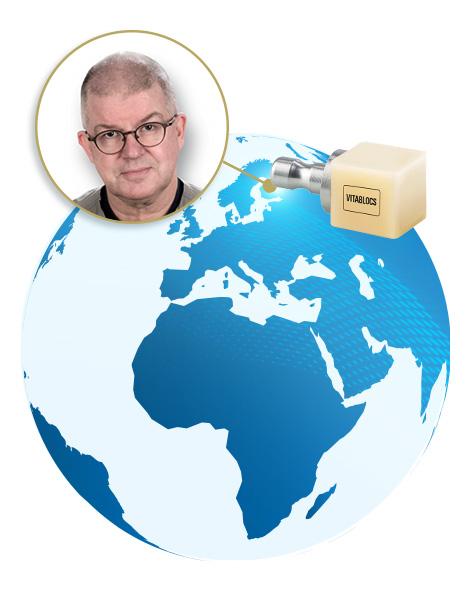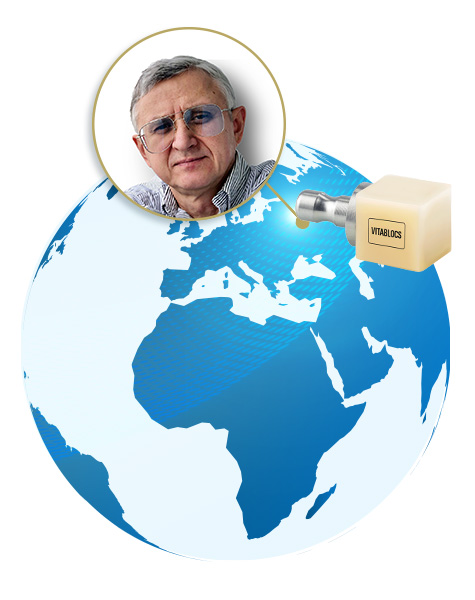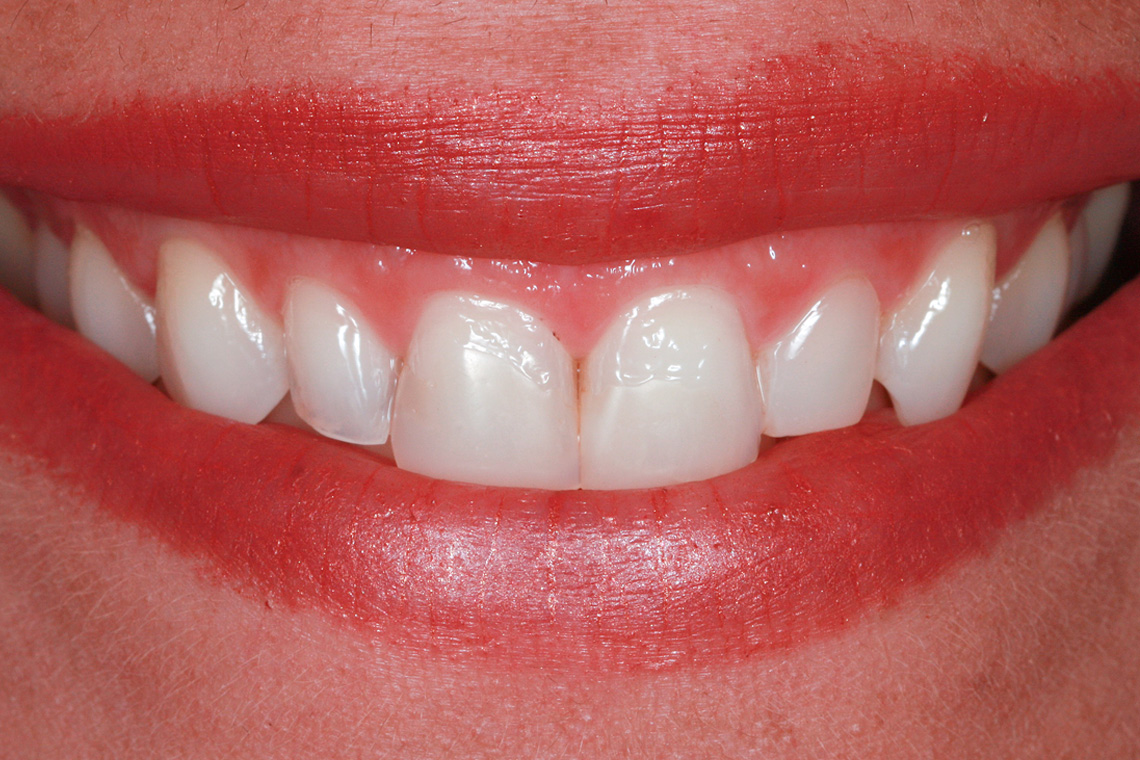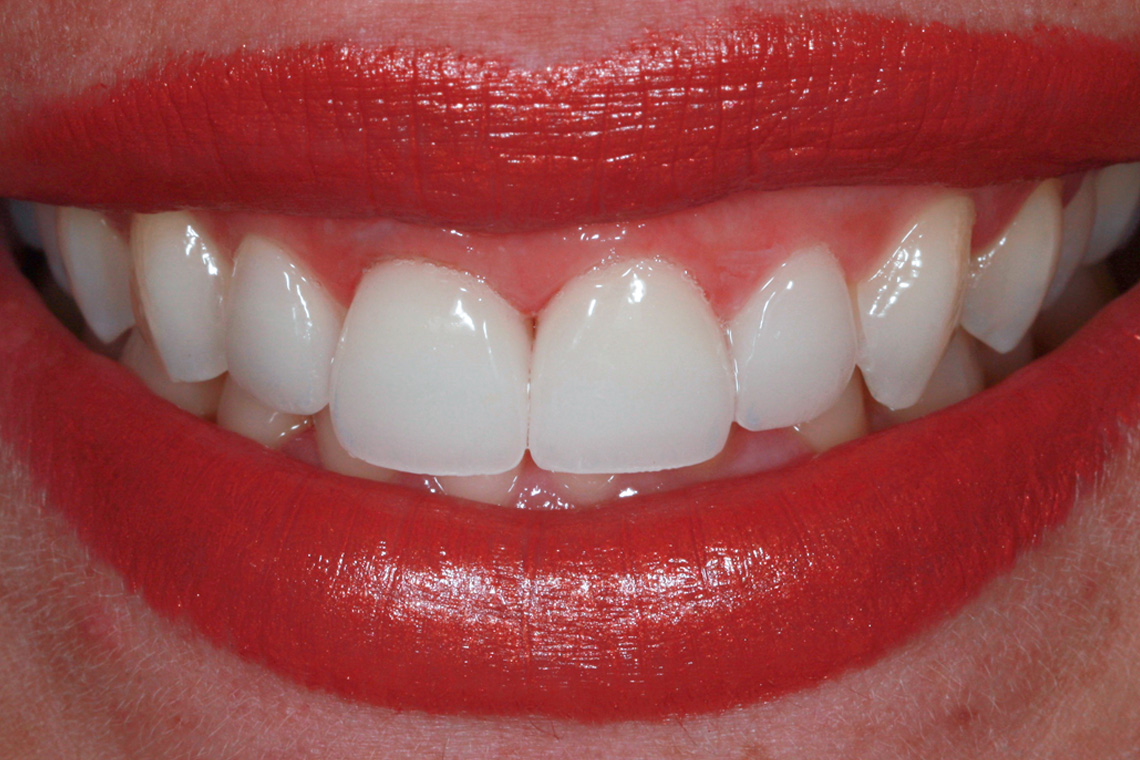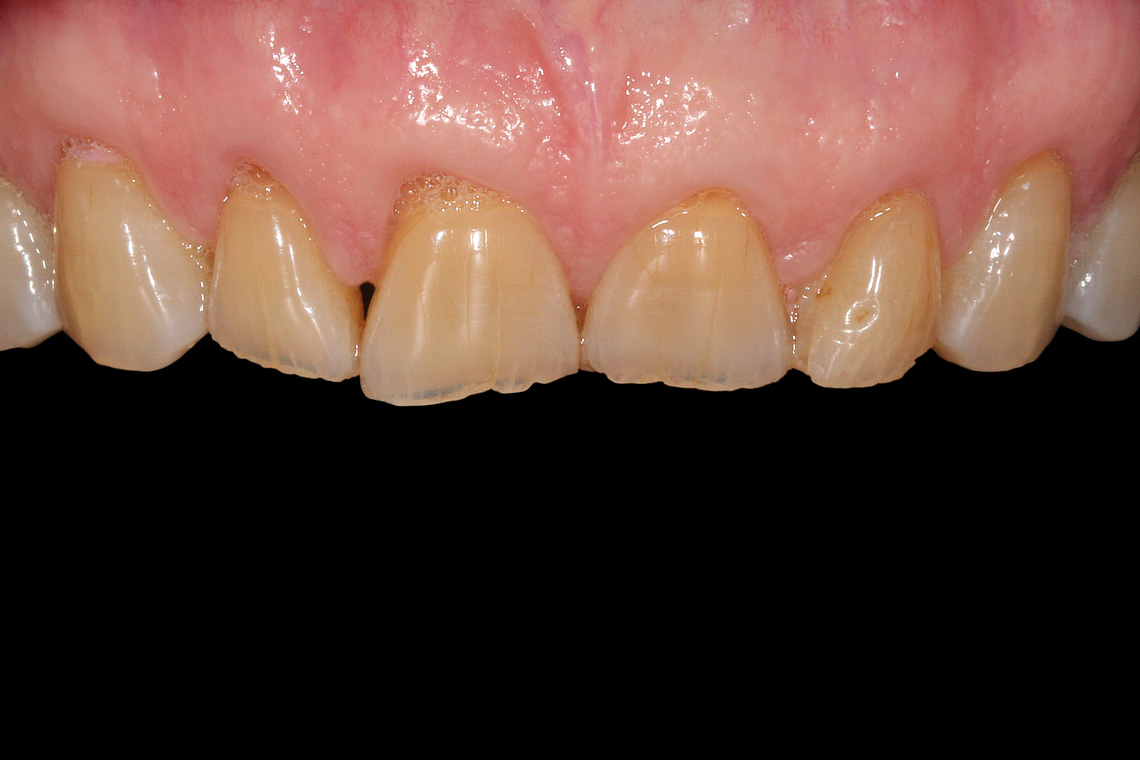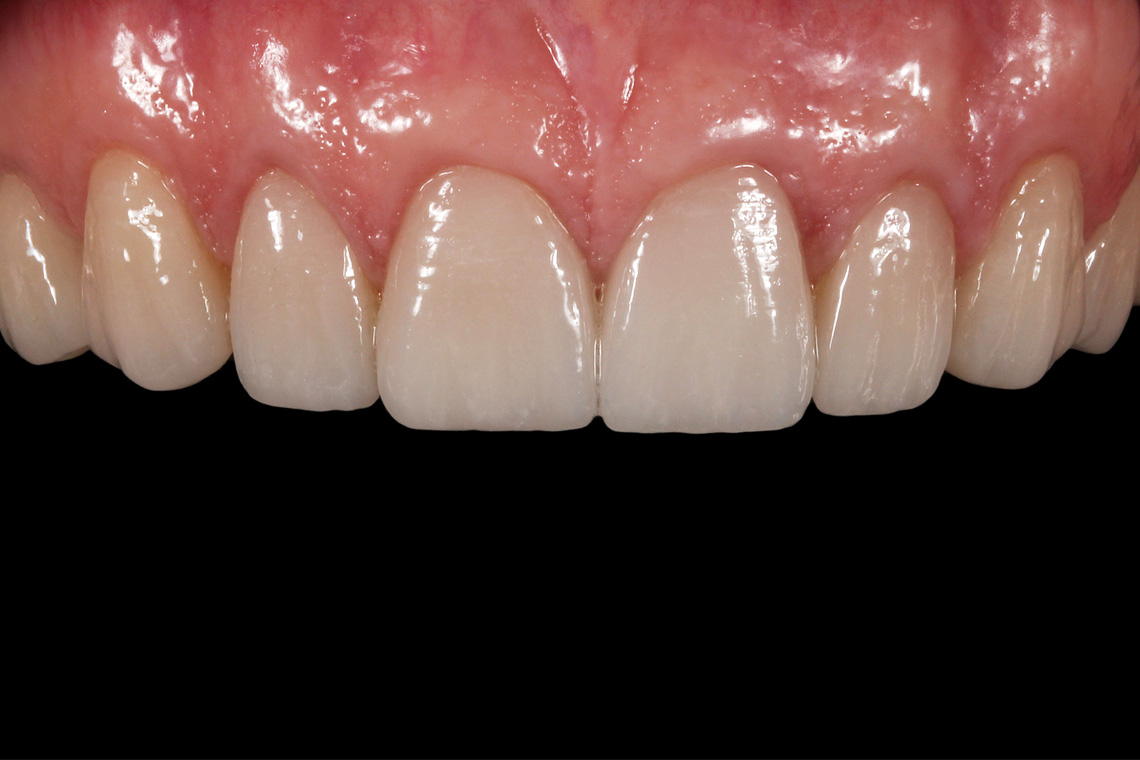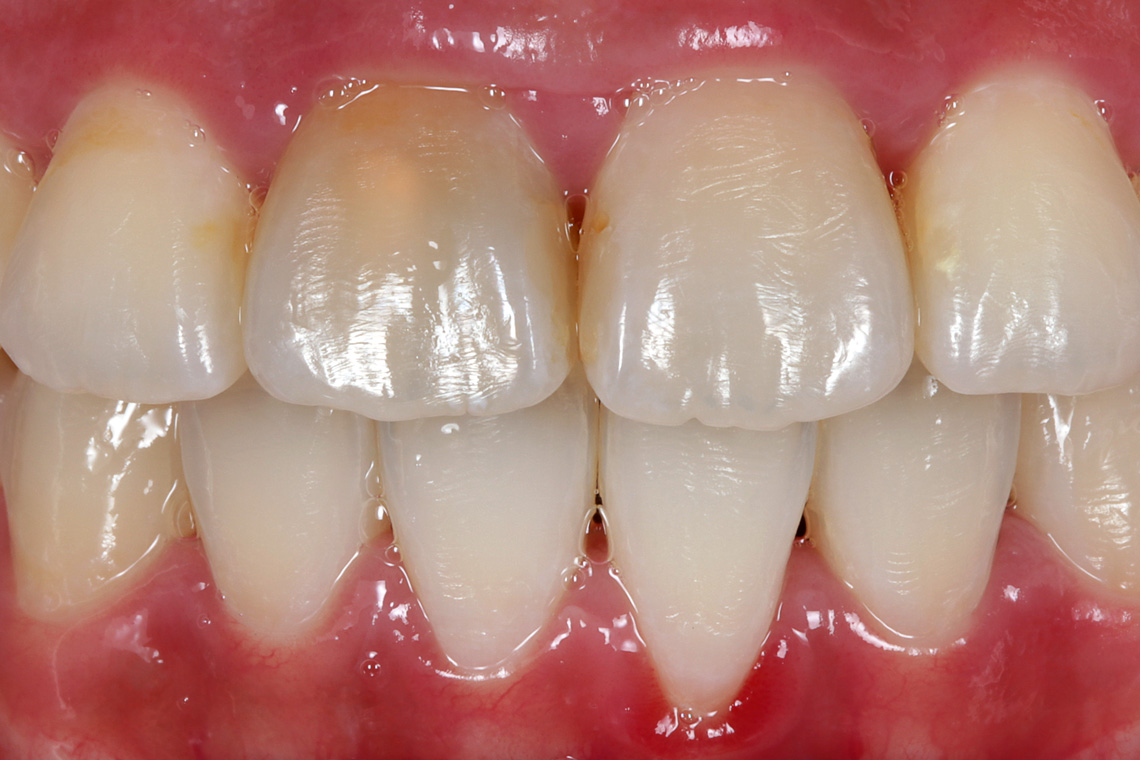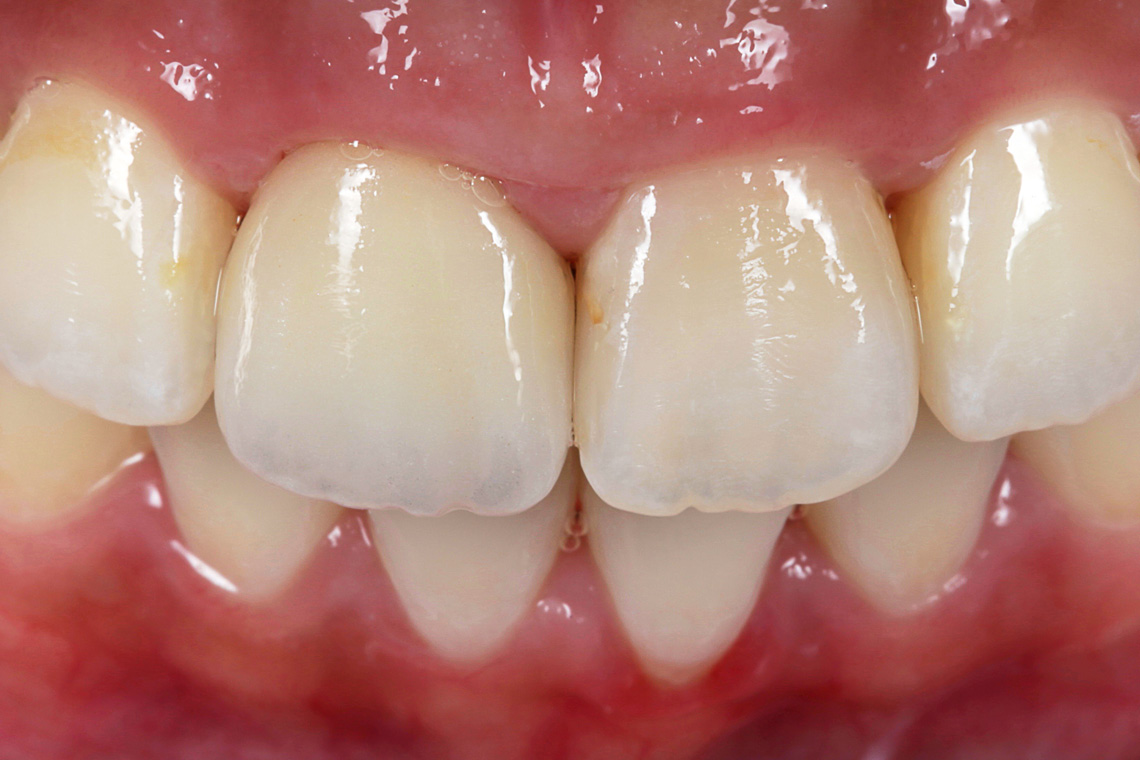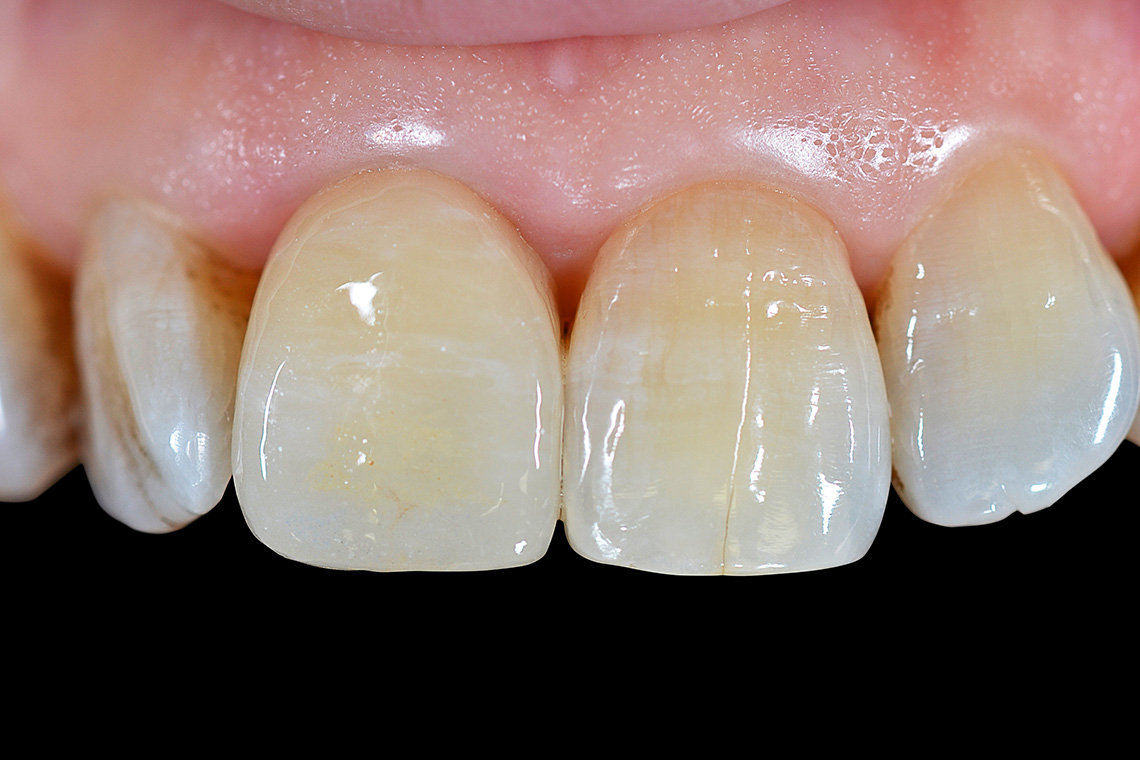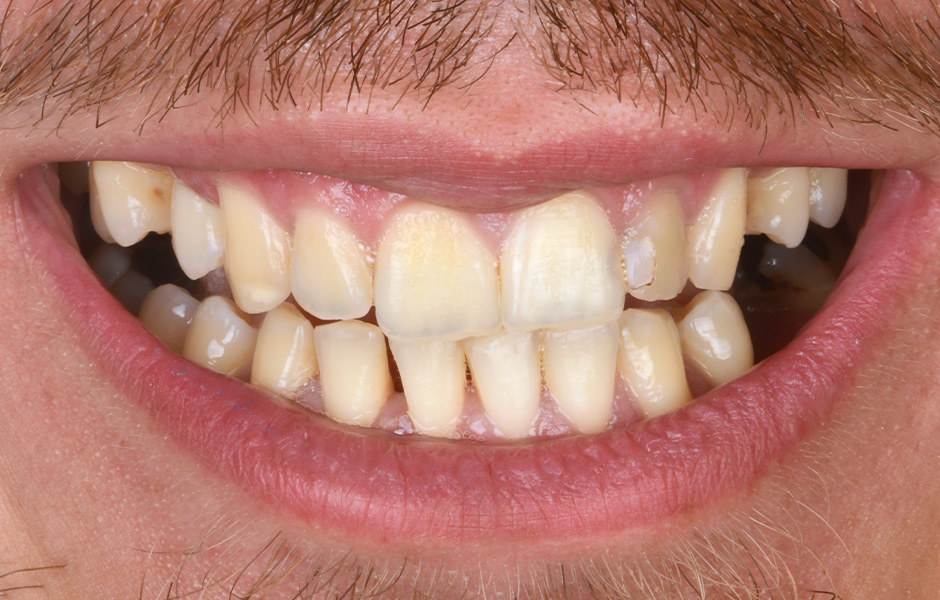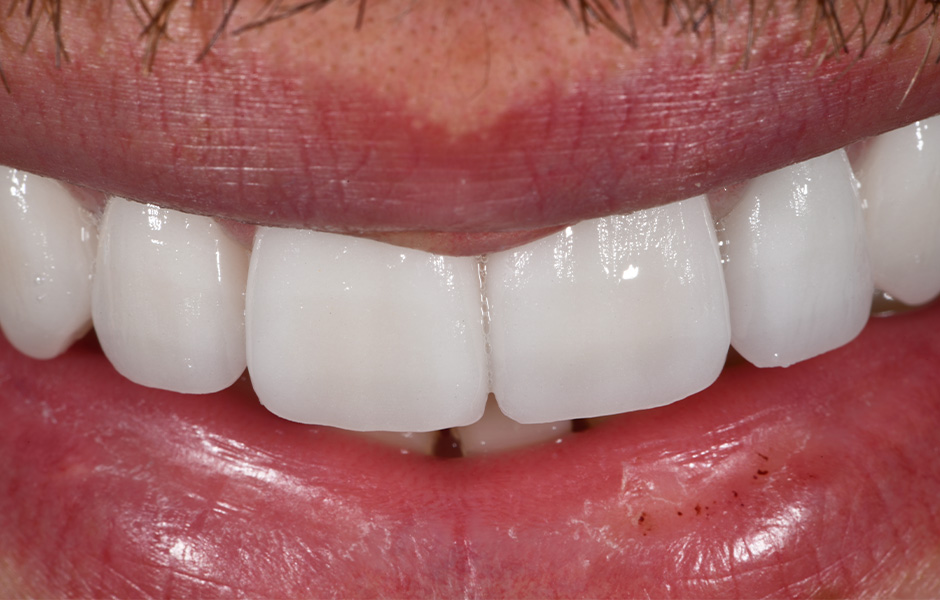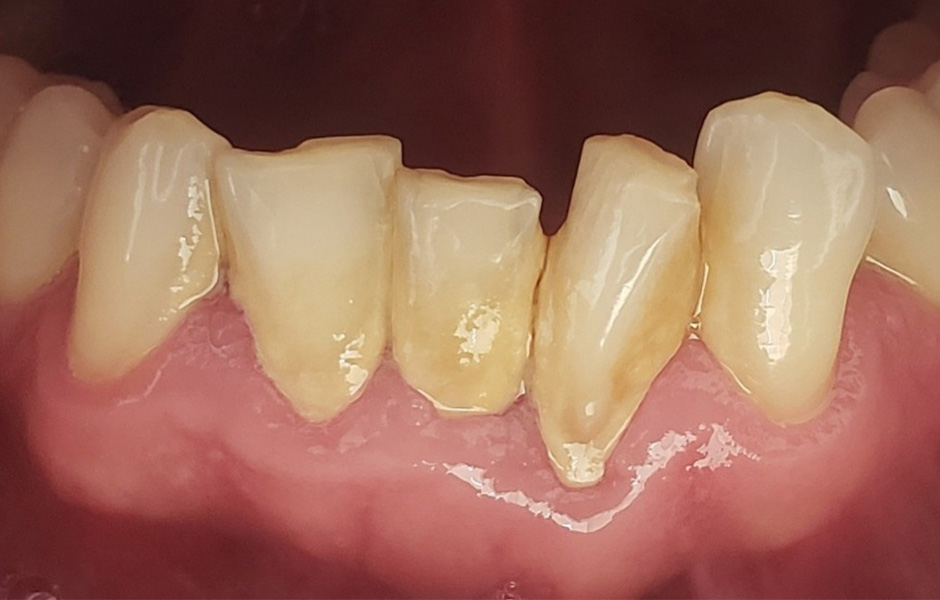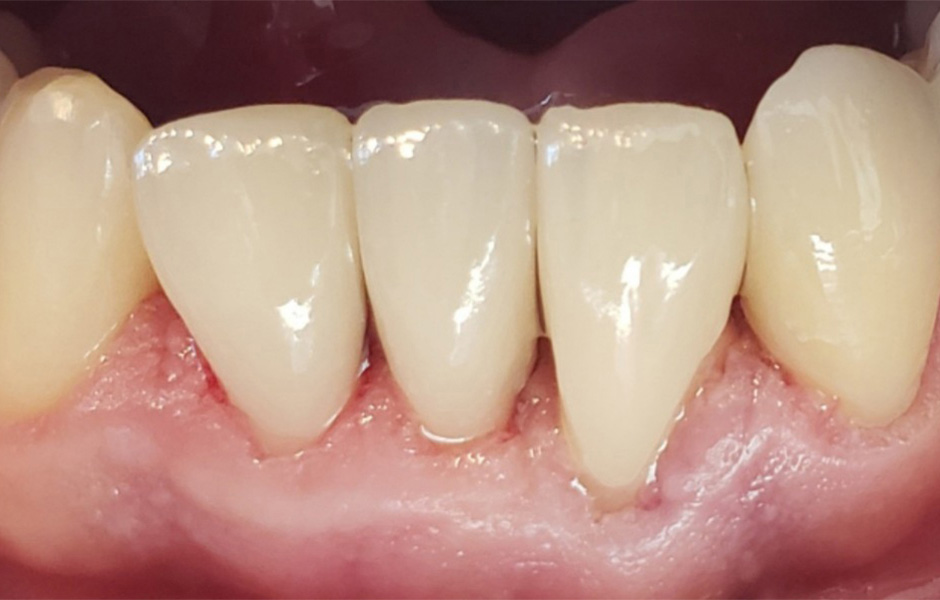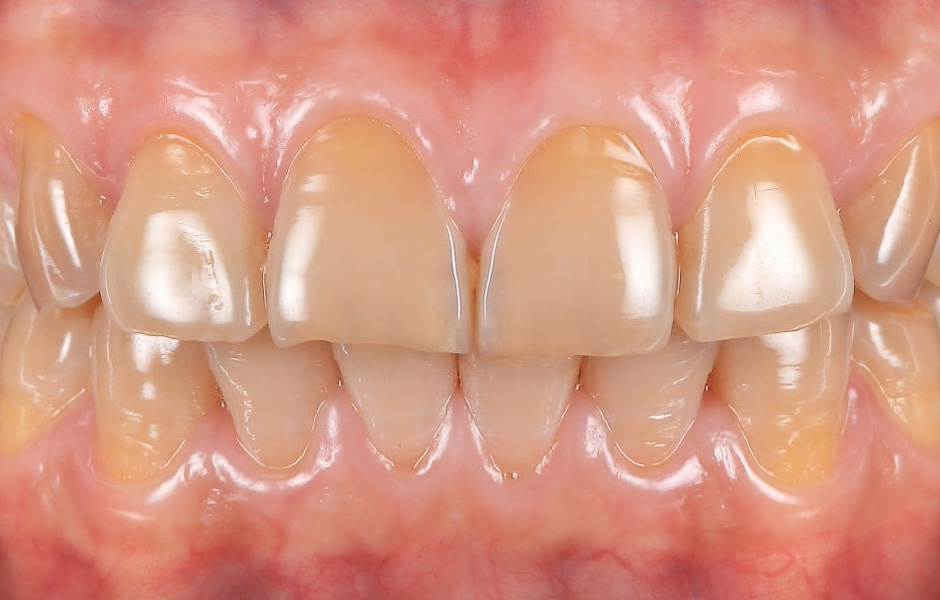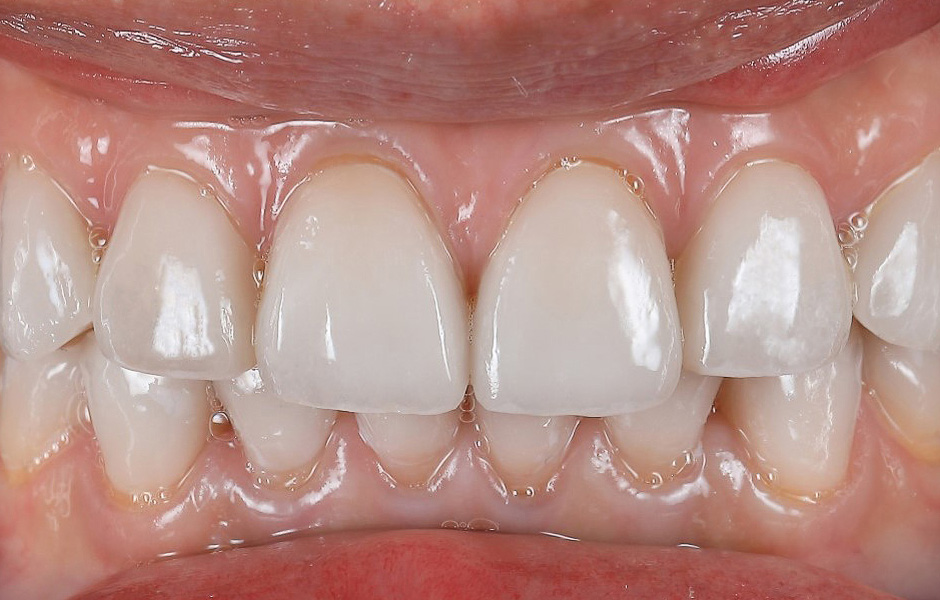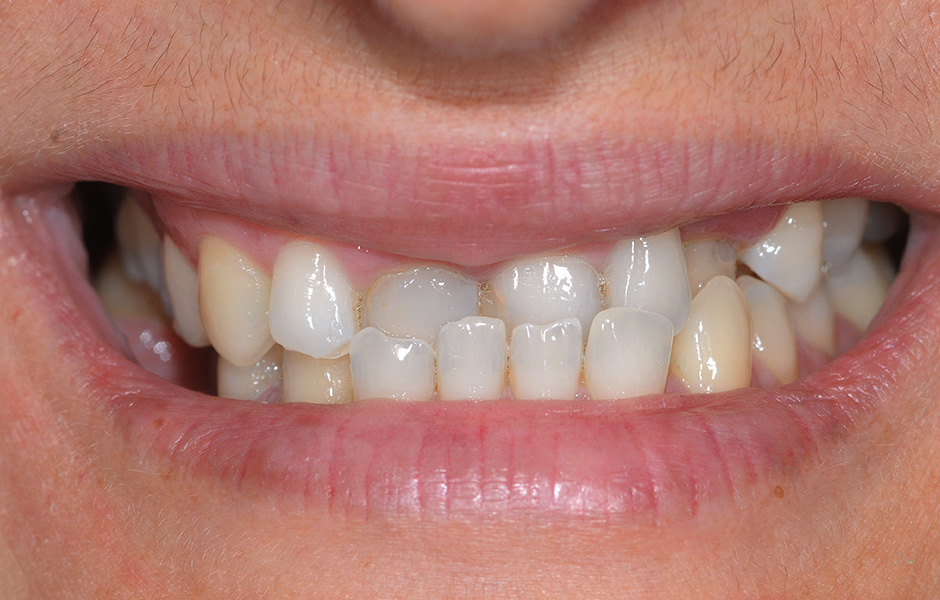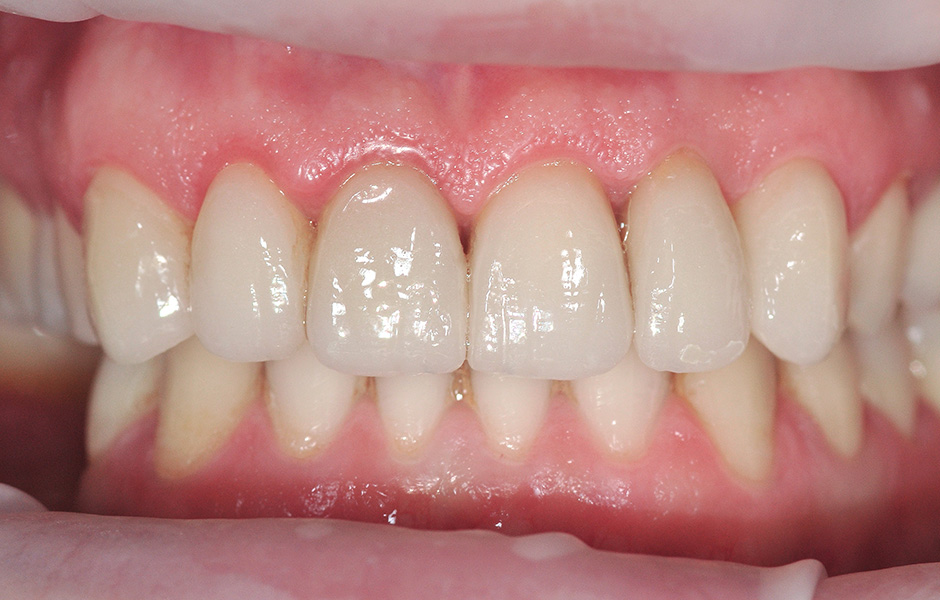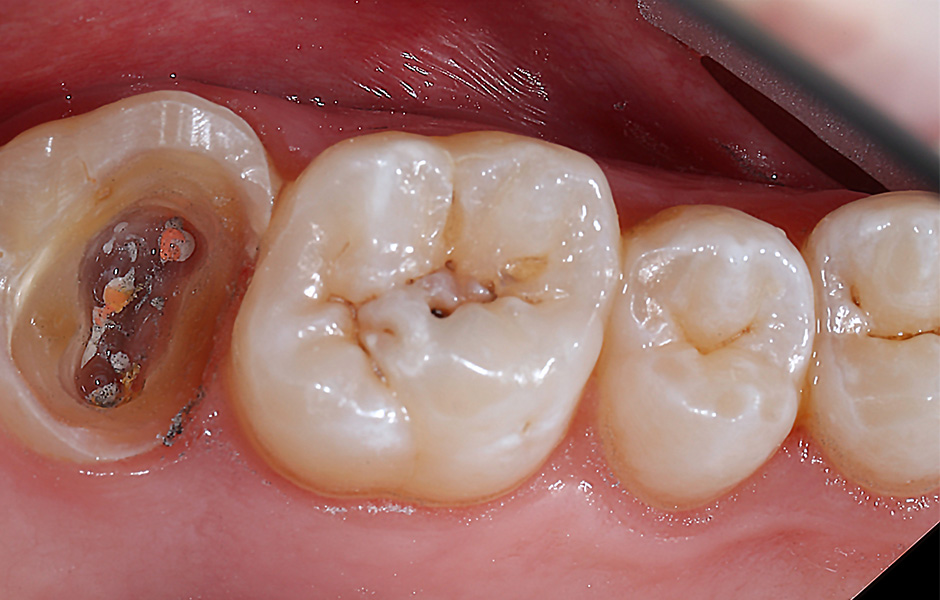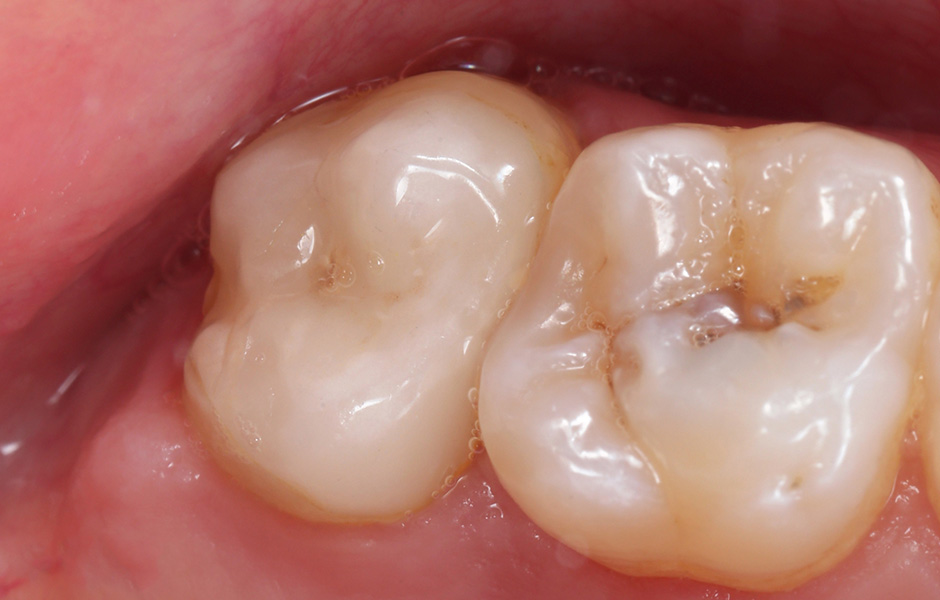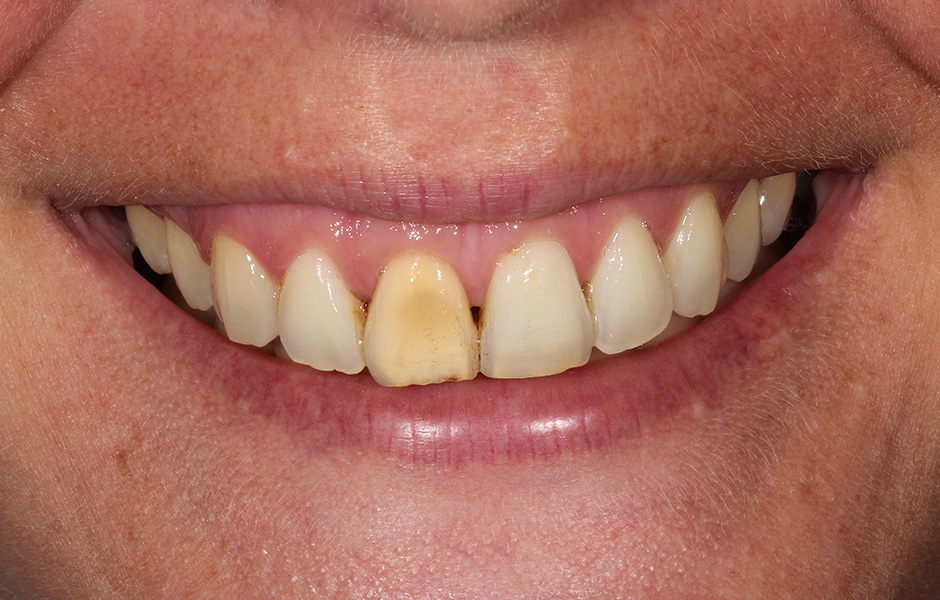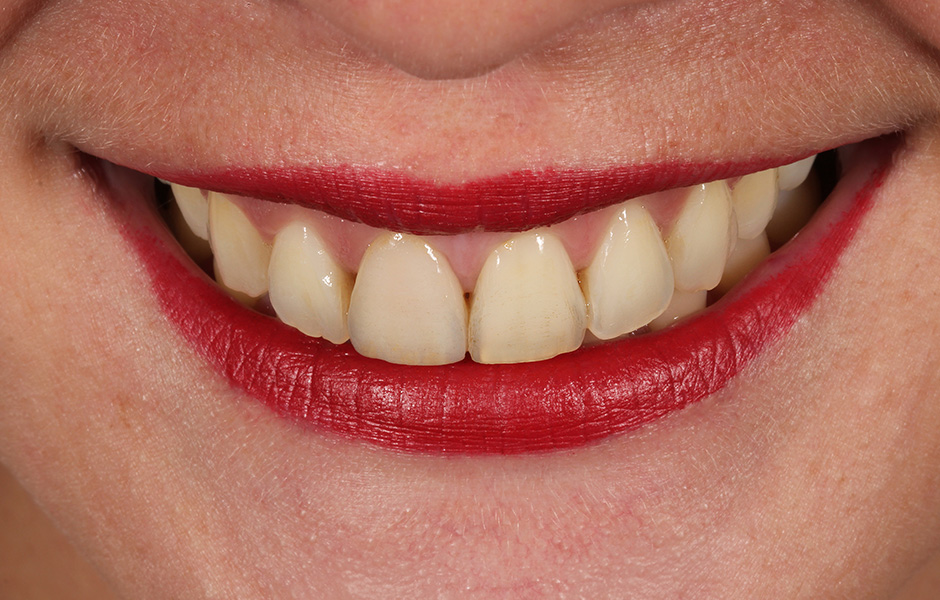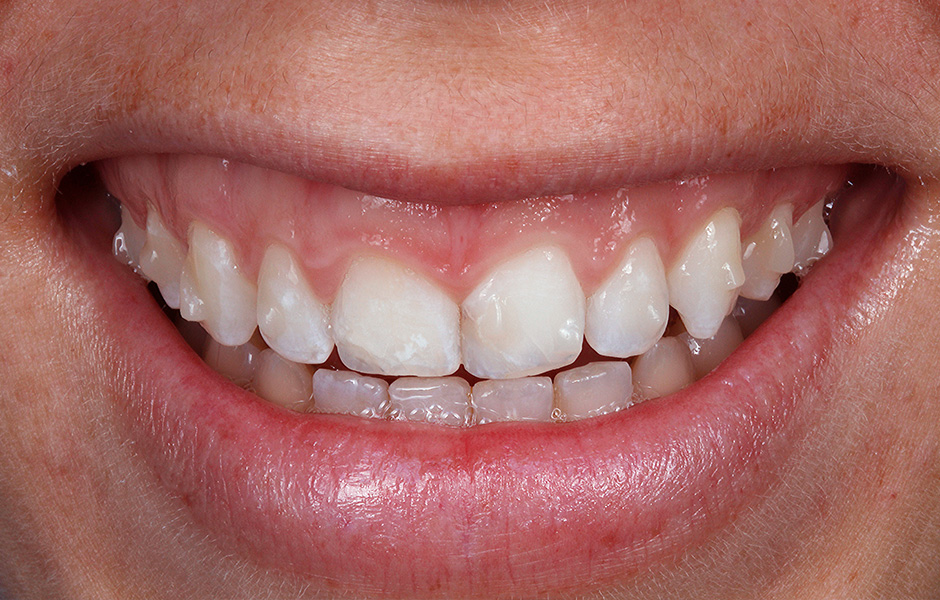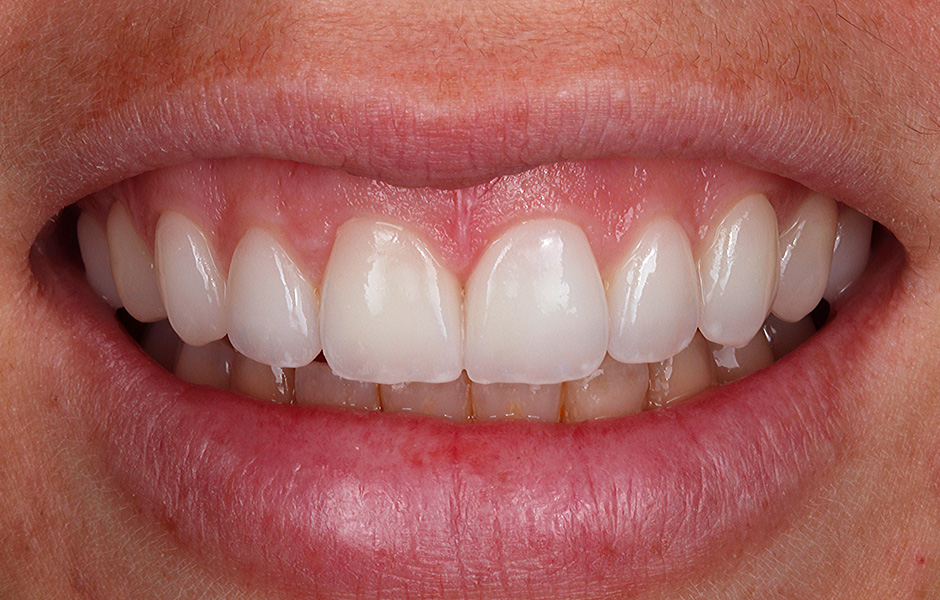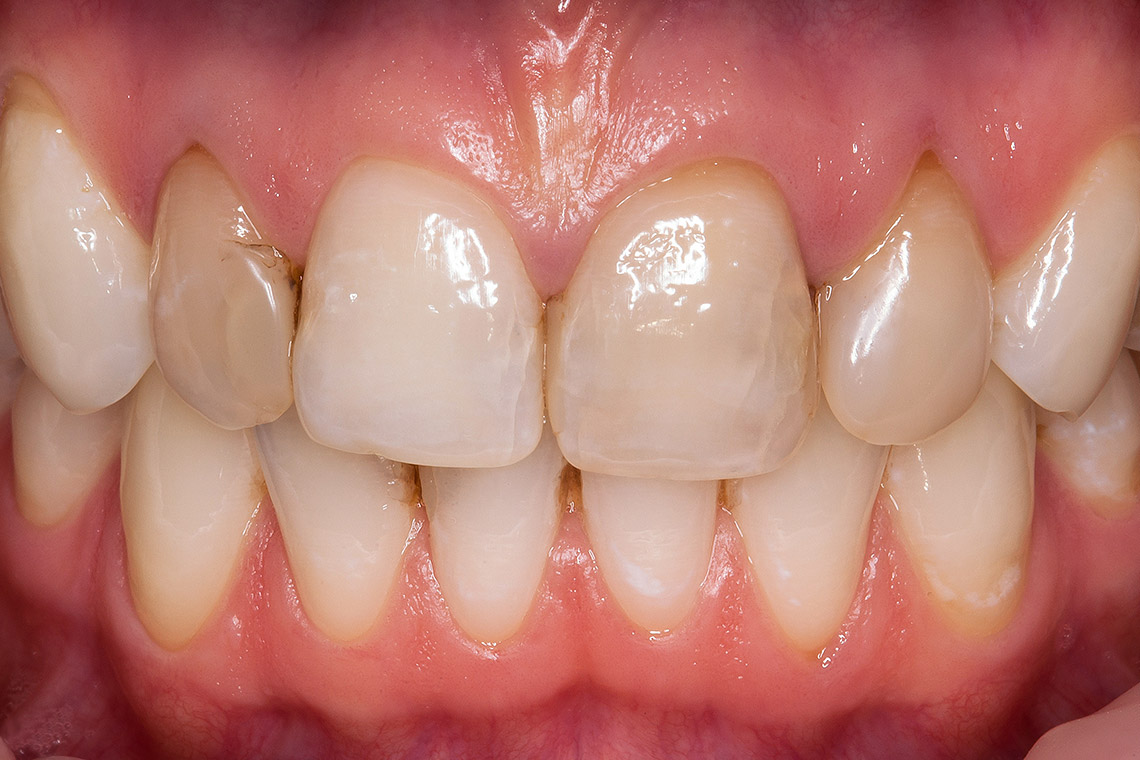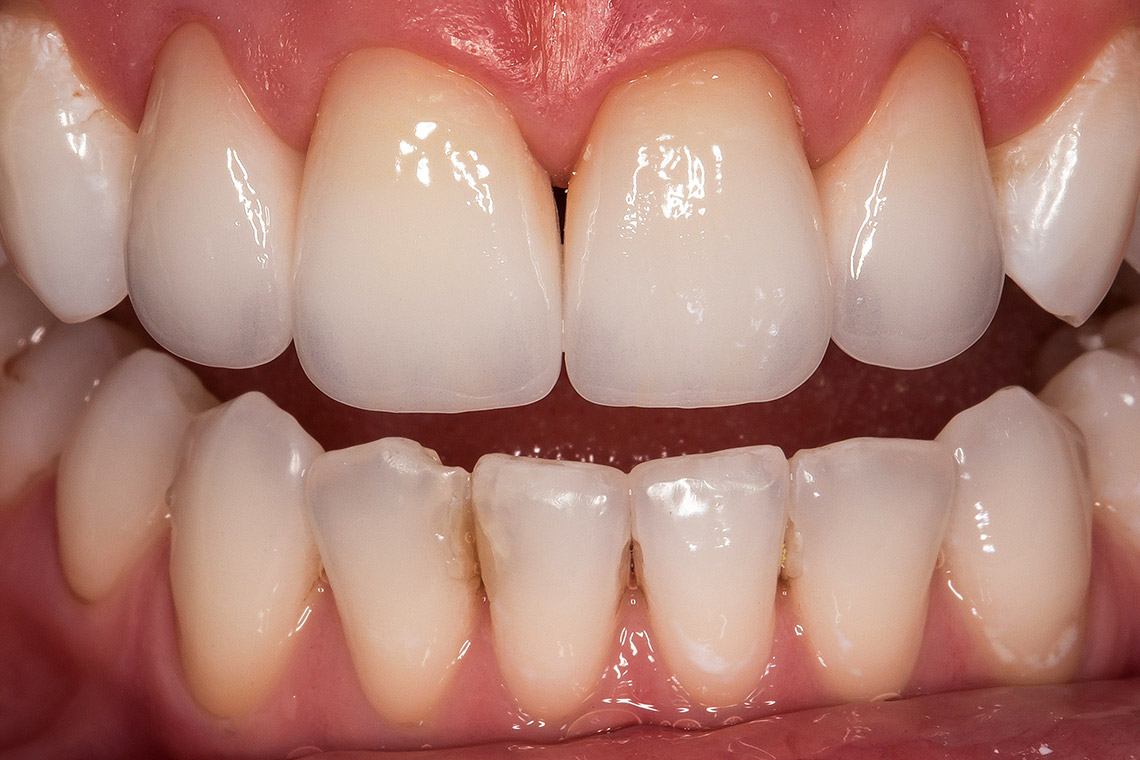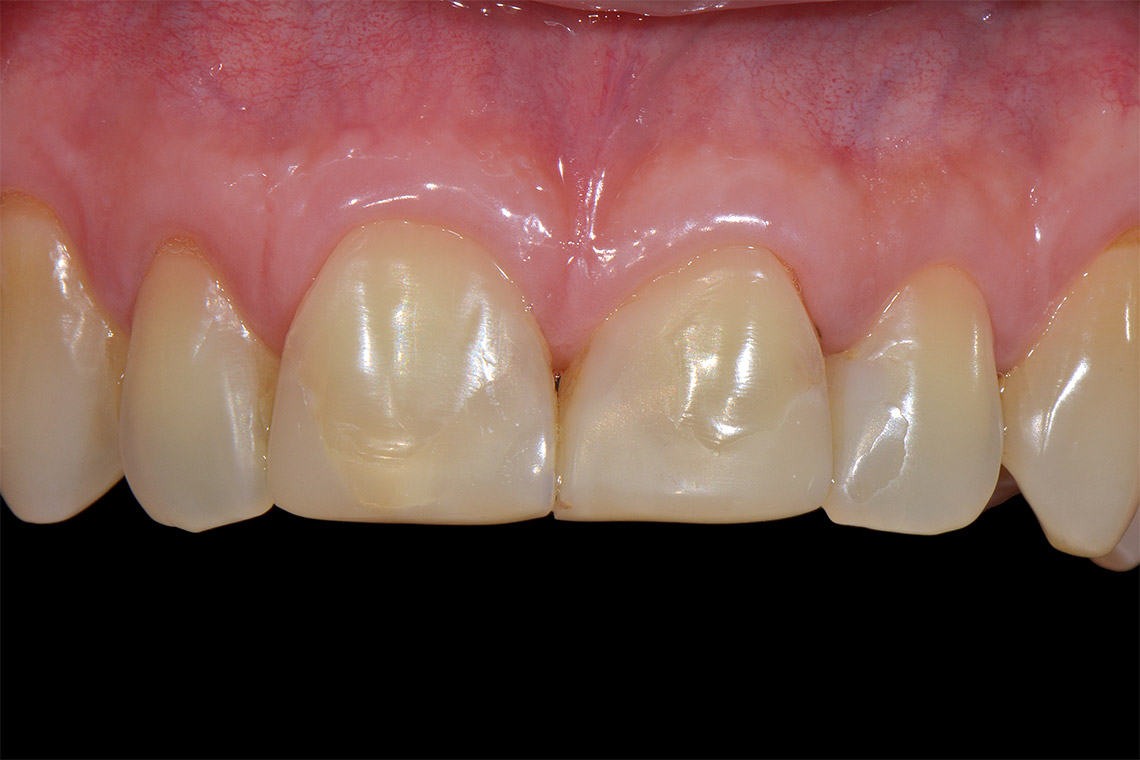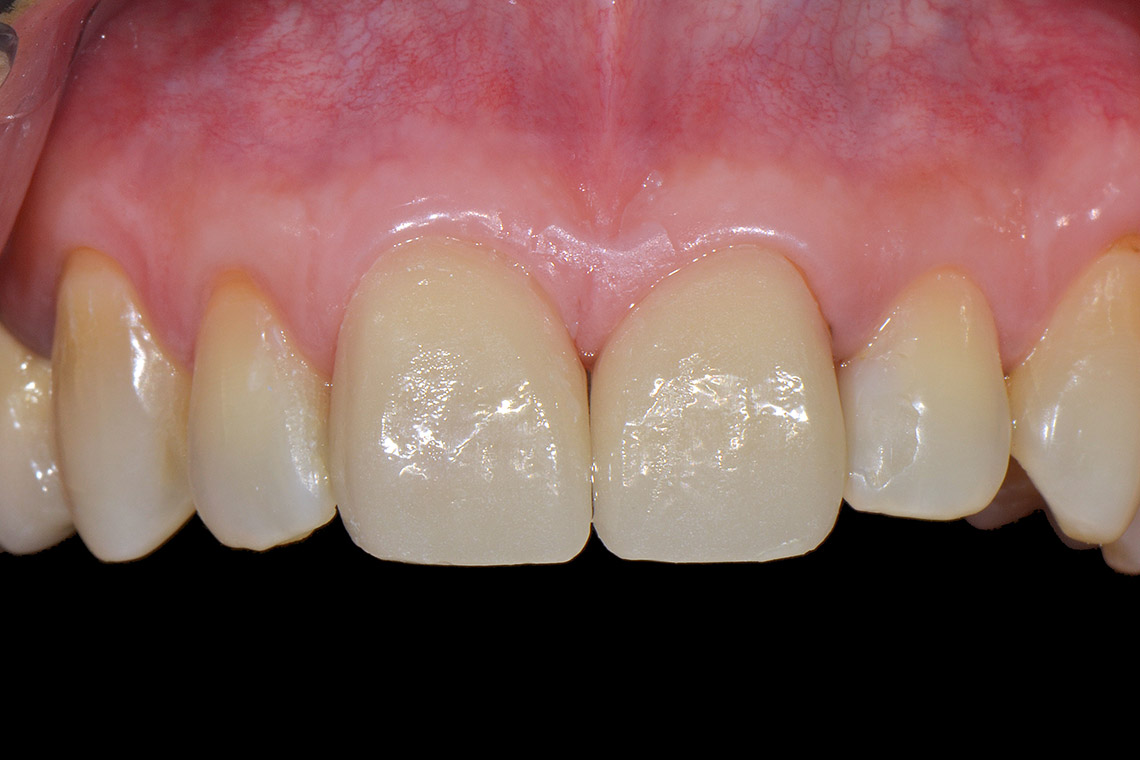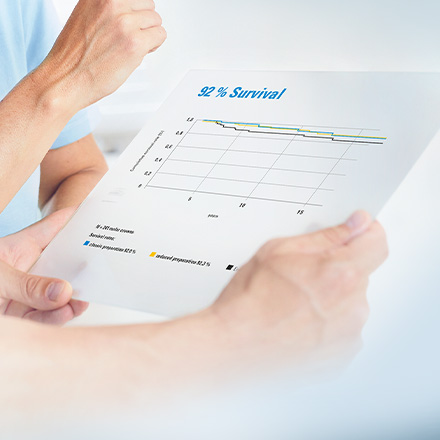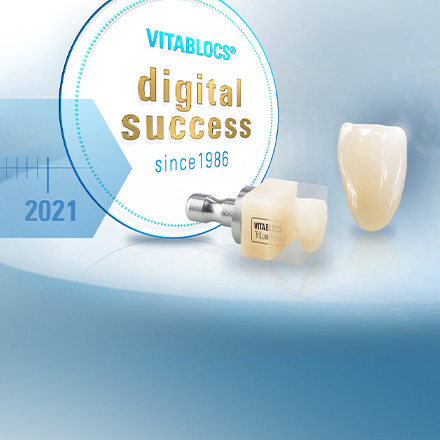How do your fellow dental professionals rate the VITABLOCS material, and why have they been using it successfully for many years? Join us as we travel around the world and discover interesting clinical cases with the VITABLOCS ceramic, and read the evaluations from fellow dental professionals.
Clinical case studies and product evaluations: How VITABLOCS are used around the world

Product reviews from colleagues around the world
This is what users have experienced with VITABLOCS.
VITABLOCS TriLuxe forte

Dr. Julio Gomez Paris,
Rosario, Argentina, 07/22
Monolithic, time-saving anterior tooth restoration with VITABLOCS TriLuxe forte.

Dr. Mon Li and Dental Technician Sally Hsieh,
CEREC Asia,
Taipei, Taiwan, 11/18
Lifelike front tooth reconstruction made of polychrome feldspar ceramics.

Dr. Önder Özdenkaya,
Dentist and dental technician,
Kocaeli, Turkey, 10/21
Five veneers and a crown made of VITABLOCS TriLuxe forte in Bleach shade 0M1.

Dr. Andrés Powditch,
Chile, 10/21
Esthetic restorations in the lower jaw in the case of anterior teeth that are rotated and tilted due to a missing incisor.
VITABLOCS RealLife

Dr. Shoji Nakamura,
Dentist,
Tokyo, Japan, 09/18
Monolithic single crown in the esthetic zone.
VITABLOCS Mark II

Dr. Jia Zhen,
Dentist,
Chengdu, China, 10/21
The esthetic restoration (upper and lower jaw) with bleach-colored VITABLOCS Mark II due to moderate tetracycline discoloration.
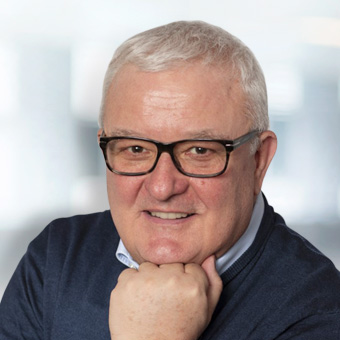
Dr. Diego Bonaudo,
Dentist,
Turin, Italy, 07/21
Following orthodontic treatment, the esthetic zone is restored with veneers made of VITABLOCS Mark II.

Dr. Oxana Naidyonova,
Dentist,
Karaganda, Kazakhstan, 07/21
An upper molar is restored using an overlay made of VITABLOCS Mark II.

Dr. Julio Gomez Paris,
Dentist and dental technician,
Santa Fe, Argentina, 07/21
Tooth shade determination, block selection and characterization for the appropriate shade effect of an individual anterior veneer made of VITABLOCS Mark II.

Rafa Jaén,
Dental technician,
Barcelona, Spain, 07/21
The plannable restoration of the esthetic zone with veneers made of VITABLOCS Mark II using an idealized mock-up.

Dr. Stas Belous,
Dentist,
Ulyanovsk, Russia, 07/21
Strongly discolored, endodontically treated upper incisors were reconstructed using crowns made from VITABLOCS Mark II, resulting in a natural shade effect and morphology.
Dr. Ignatius Ronny Halim,
Dentist,
Jakarta, Indonesia, 07/21
Anterior crowns made from VITABLOCS TriLuxe forte as a highly esthetic and long-lasting replacement for worn out composite restorations.
Spain: VITABLOCS case by Dental Technician Bárbara Calero

Dental Technician Bárbara Calero, Málaga, Spain
"When there is sufficient enamel, I prefer to use polychrome VITABLOCS feldspar ceramic for my highly esthetic PERFECT MATCH restorations."
Digital success story: Feldspar ceramics in the esthetic zone
Initial situation
Due to trauma, teeth 11 and 21 had been restored with composite build-ups, which were now several years old. The patient was dissatisfied with the esthetics of both teeth, as she did not like their shade or shape. This is why she had wanted a new restoration for some time.
Solution
After analyzing the anterior teeth and the esthetic zone, we suggested that the patient not only have teeth 11 and 21 restoratively replaced, but also teeth 12 and 22, which were slightly tilted palatally, in order to achieve a better overall esthetic result. The treatment was planned and carried out using a mock-up. The decision was made in favor of four veneers made of the highly esthetic and polychrome fine-structure feldspar ceramic VITABLOCS TriLuxe forte 1M2.
Why VITABLOCS TriLuxe forte?
We used VITABLOCS TriLuxe forte because a natural chroma gradient, as well as luminous and fluorescent effects, are already integrated into the blanks. In the CAD design, the veneers could be morphologically designed as planned in the analog wax-up. The macrotexture was also taken into account, so that after the restorations had been milled from fine-structure feldspar ceramic, only small details of the microtexture had to be worked in. After the final finishing, all that was left to do was minimal characterization and glazing. With VITABLOCS TriLuxe forte, the most highly esthetic restorations can be created with minimal effort.
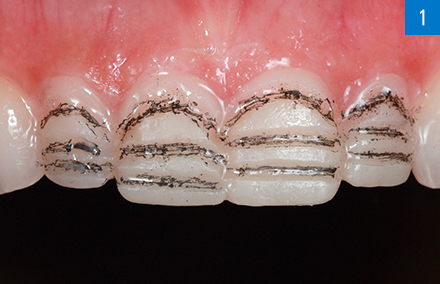
With the aid of a mock-up, the procedure was planned and the preparation was minimally invasive.
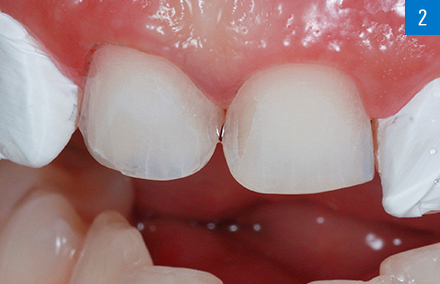
The minimally invasive preparation of 11 and 21 before the seating of the veneers.
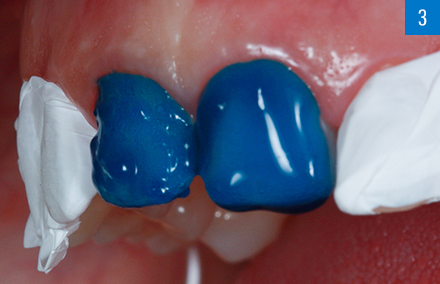
The enamel was etched with phosphoric acid in order to maintain a micro-retentive surface.
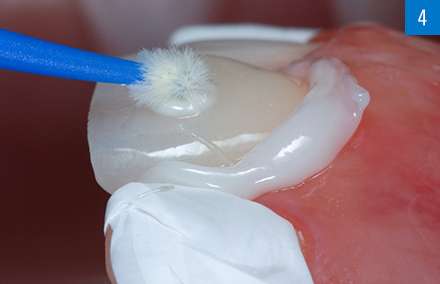
The fully adhesive seating of the veneers on 21 with VITA ADIVA F-CEM.
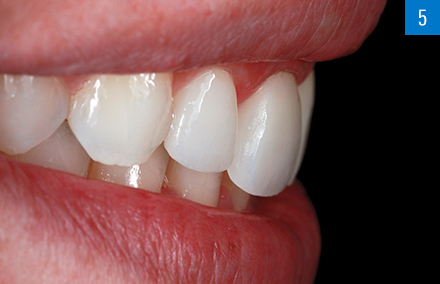
The harmonized dental arch in the lateral view.
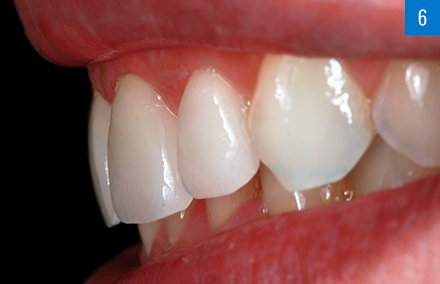
With VITABLOCS TriLuxe forte, the most highly esthetic restorations can be created with minimal effort.
Argentina: VITABLOCS case by Dr. Gomez Paris

Dr. Julio Gomez Paris, Rosario, Argentina
"I use VITABLOCS TriLuxe forte to efficiently achieve natural tooth esthetics."
A success story: Monolithic, time-saving anterior tooth restoration with excellent light dynamics
Initial situation
A 72-year-old woman came to the practice because she was not satisfied with the esthetic appearance of her teeth. The clinical inspection revealed severely abraded and erosively damaged anterior teeth with exposed root areas.
Solution
Guided gingivectomies to harmonize the gingival collar and controlled veneer preparation in the anterior area are to be performed using a wax-up. The intraoral mock-up and the preparations were each scanned; using this information, 12 veneers were constructed from the polychrome feldspar ceramic VITABLOCS TriLuxe forte in the shade 1M2. Thanks to the light dynamics and the integrated shade gradient, only minimal characterization was required after the restorations had been finished to achieve a highly esthetic result.
Why VITABLOCS TriLuxe forte?
We used VITABLOCS TriLuxe forte because the patient wanted fast CAD/CAM restorations that offer a natural play of shade and light. The polychrome VITABLOCS variant features an integrated, finely nuanced shade gradient and can be quickly and precisely processed, thanks to its finely structured ceramic. In the design software, the restoration can be placed in the virtual blank in such a way that the chroma gradient can be controlled individually for each patient.
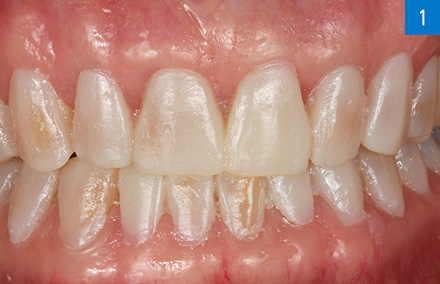
It was possible to transfer the wax-up intraorally using a silicone key.
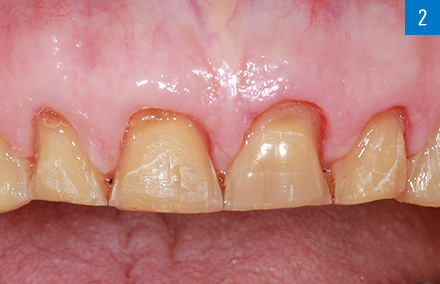
Situation in the upper jaw after guided mock-up preparation.
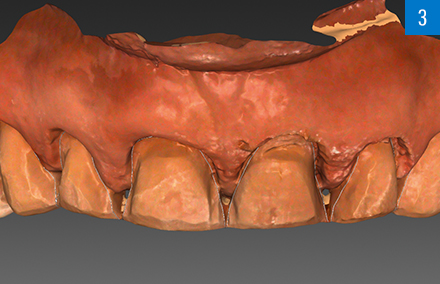
The scanned preparation of the upper jaw in the CAD software.
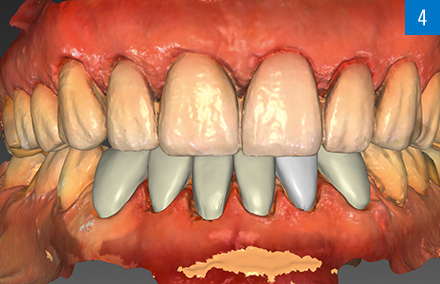
The constructed veneers in the upper and lower jaw in the CAD software.
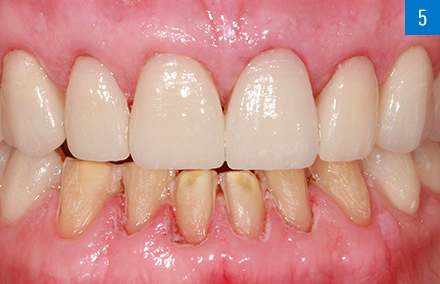
The veneers made from VITABLOCS TriLuxe forte following placement in the upper jaw.
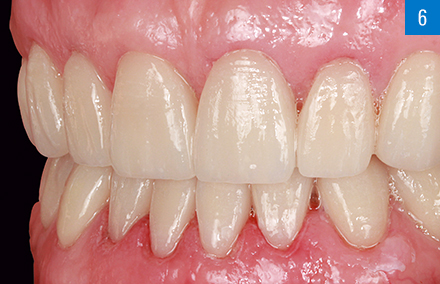
The highly esthetic rehabilitation following placement of the veneers in the lower jaw.
Taiwan: VITABLOCS case by Dr. Mon Li and Dental Technician Sally Hsieh

Dr. Mon Li and Dental Technician Sally Hsieh, CEREC Asia, Taipei, Taiwan
"The integrated shade gradient in four layers of intensity facilitates a natural play of shade and light in the esthetic zone."
A success story: Lifelike front tooth reconstruction made of polychrome feldspar ceramics
Initial situation
Following root canal treatment, a 20-year-old patient was unhappy with the dark discoloration of tooth 11 that was otherwise symptom-free. X-rays showed sufficient root canal filling.
Solution
After an in-depth consultation, the patient chose a fast, all-ceramic crown restoration made of the polychromatic feldspar ceramic VITABLOCS TriLuxe forte to meet esthetic expectations, and stabilize tooth 11 for the long term. The original morphology was to be retained, which is why it was scanned prior to preparation for designing the crown. Precise determination of the shade of the adjacent tooth was carried out using VITA Easyshade V in order to be able to select the appropriate block.
Why VITABLOCS TriLuxe forte?
We used VITABLOCS TriLuxe forte because the patient wanted a permanent, highly esthetic crown restoration in the esthetic zone in just a single session. Thanks to the integrated shade gradient and the brilliant play of shade and light of the polychromatic feldspar ceramic blank, we were able to achieve the desired result with minimal characterization, despite the limited timeframe.
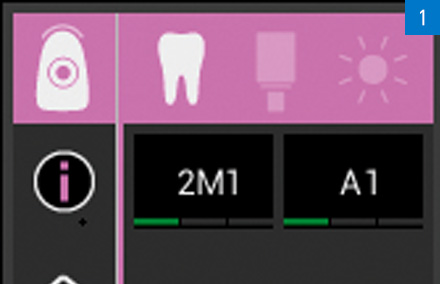
The tooth shade was precisely determined using the VITA Easyshade V spectrophotometer.
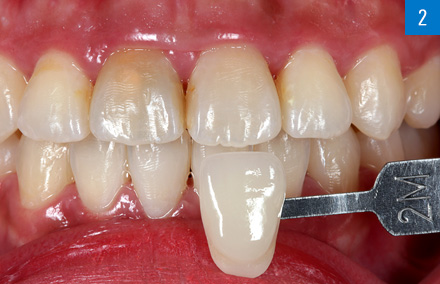
The digitally determined tooth shade 2M1 was documented using the corresponding shade tab.
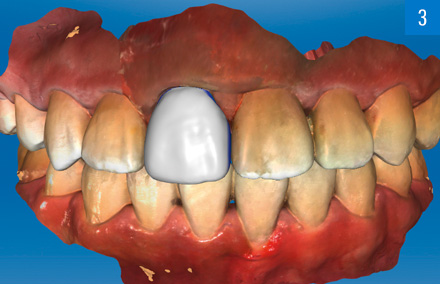
It was possible to adopt the original morphology for the design of the crown.
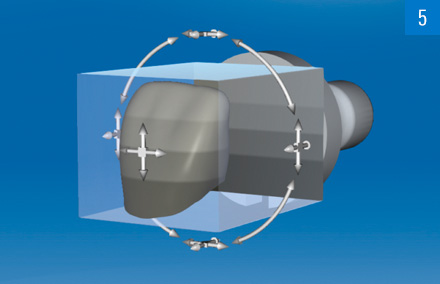
The shade gradient can be controlled through the position of the restoration in the block.
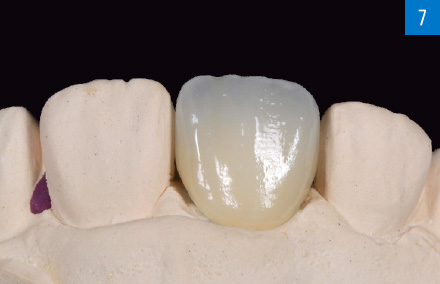
The finalized crown on the model after minimal characterization using VITA AKZENT Plus.
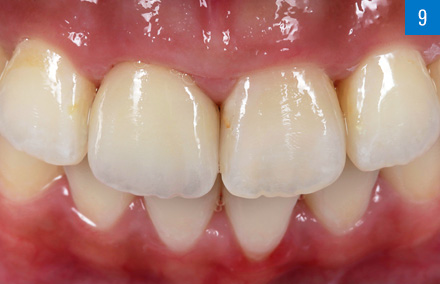
The highly esthetic result using VITABLOCS TriLuxe forte feldspar ceramic.
Japan: VITABLOCS case by Dr. Nakamura

Dentist Dr. Shoji Nakamura, Tokyo, Japan
"Thanks to the three-dimensional layer structure of VITABLOCS RealLife, it is possible to reproduce the natural shade gradient of the adjacent incisors."
A success story: Monolithic single crown in the esthetic zone
Initial situation
A 67-year-old patient was unhappy with the position and discoloration of non-vital tooth 11. Due to the extreme rotation, the patient was advised to have orthodontic treatment prior to restorative measures. However, despite the more invasive preparation, she ruled out this proposal and requested an immediate, fast and inexpensive esthetic restoration.
Solution
A full crown restoration was to be fabricated from the polychromatic feldspar ceramic VITABLOCS RealLife using CAD/CAM technology. The blank features a curved, three-dimensional layer structure between the dentine and incisal area. When positioned accordingly during nesting, this facilitates a shade gradient appropriate to the patient. The basic tooth shade 3M2 was precisely determined using the VITA Easyshade V spectrophotometer, and in block mode, the most appropriate blank was suggested for the digital workflow. Prior to preparation, root canal treatment of tooth 11 was successfully completed.
Why VITABLOCS RealLife?
We used VITABLOCS RealLife feldspar ceramic because with precise tooth shade determination, we were able to select a block that offered shade accuracy. Thanks to the coordinated virtual positioning of the restoration in the three-dimensional layer structure of VITABLOCS RealLife, it was already possible to reproduce the shade gradient of the adjacent incisors. As a result, the VITA AKZENT Plus stains were only used to characterize the final nuances.
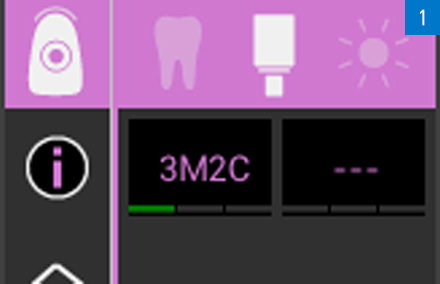
The tooth shade determined in block mode by the VITA Easyshade V was 3M2.
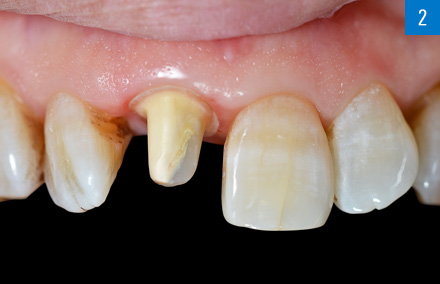
The rotation was balanced out during the preparation.
After the intraoral scan, the shape of the crown was virtually designed.

VITABLOCS RealLife was positioned on the preparation.

The three-dimensional shade and translucency gradient was optimally adjusted.
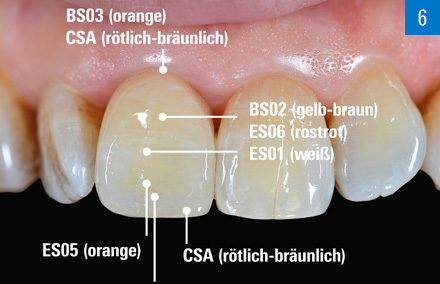
The crown was individually characterized with VITA AKZENT PLUS stains.
Turkey: VITABLOCS case by Dr. Özdenkaya

Dr. Önder Özdenkaya, Dentist and dental technician, Kocaeli, Turkey
"I would give VITABLOCS five stars because I've been using it very happily and successfully since 2011 and have full control over every fabrication step."
A success story: VITABLOCS TriLuxe forte in Bleach shade 0M1
Initial situation
Our patient was unhappy with the shade and shape of his upper anterior teeth. Tooth 22 in particular appeared strongly discolored following root canal treatment and had been restored with an inadequate composite filling. Photo documentation and digital smile design clearly showed: The narrow dental arch of the anterior teeth with its palatal tilt did not harmonize with the buccal corridor. The positioning of the tooth axes was irregular.
Solution
As part of digital smile design, all esthetic parameters were optimized virtually, and an intraoral mock-up created on this basis. Following a final discussion with the patient, guided mock-up preparation was carried out (tooth 13 to 23) so that treatment would be as minimally invasive as possible and would not extend beyond the enamel to ensure optimal adhesive bonding. The tooth axes were also corrected during preparation. This was followed by CAD/CAM fabrication of five veneers and one crown on tooth 22. VITABLOCS TriLuxe forte was selected in bleach shade 0M1 in order to meet the patient's wish for teeth that were as bright as possible.
Why VITABLOCS TriLuxe forte?
We chose the polychromatic, bleach-colored VITABLOCS TriLuxe forte 0M1 so we could meet the patient's demanding esthetic requirements. Thanks to monolithic fabrication as part of the digital workflow, minimally-invasive removal of substance during preparation was still possible despite correcting the tooth axes.
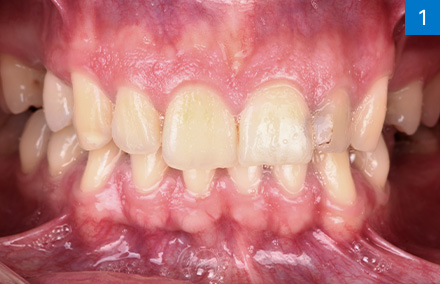
Initial situation with dark tooth color and irregular tooth axes.
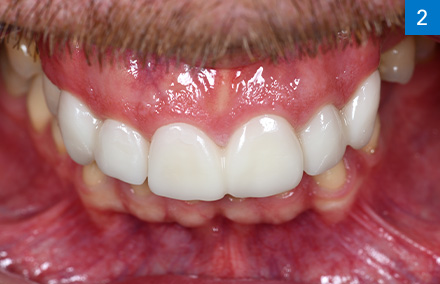
The mock-up simulated the final restorations in terms of function and esthetics.
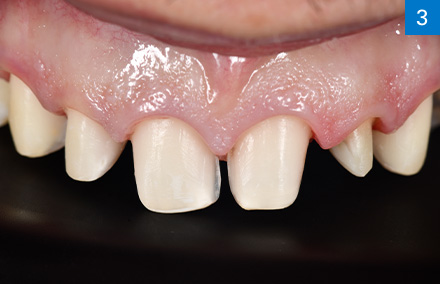
Minimally-invasive preparations thanks to mock-up and monolithic fabrication using VITABLOCS TriLuxe forte.
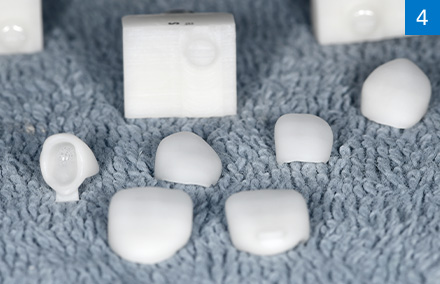
Five veneers and a crown directly after the digital workflow.
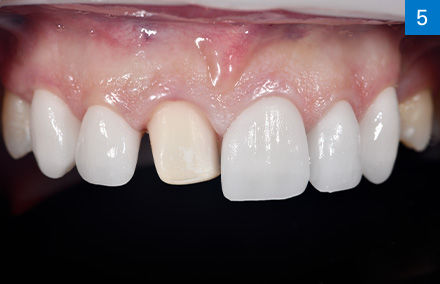
Particularly during fully-adhesive seating the irregular tooth axes were clear to see again.
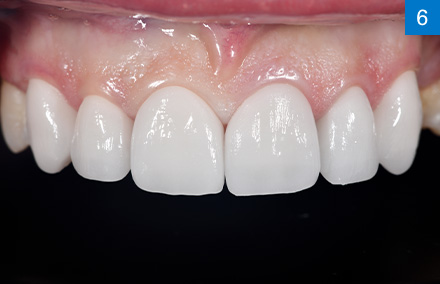
The bright restorative reconstruction result with bleach-colored VITABLOCS TriLuxe forte 0M1.
Chile: VITABLOCS case by Dr. Powditch

Dr. Andrés Powditch, Chile
"I work with VITABLOCS because it has been the most esthetic and reliable CAD/CAM material since 1986. If you want to achieve the right shade and translucence, VITABLOCS TriLuxe forte is without a doubt the best CAD-CAM material to solve the problem."
A success story: Veneers and crowns made from VITABLOCS TriLuxe forte
Initial situation
A patient who was not a full-time resident in Chile presented in our dental practice because the esthetic appearance of his lower front teeth bothered him. An incisor (tooth 32) had been lost, which had caused tooth 31 and 33 to tilt and rotate. The advanced recession of tooth 31 and localized periodontitis were particularly noticeable. The patient did not want orthodontic treatment. He insisted on fast restorative treatment.
Solution
Following professional teeth cleaning, a three-dimensional X-ray image (DICOM) was taken, and virtual models (STL) of the teeth separately and in occlusion were generated by scanning intraorally. Both datasets were matched so that the bone level and tooth soft tissue could be taken into consideration in CEREC Smile Design and in the resulting model design. Based on this virtual planning, the aim was to even out the lower anterior jaw in one session by restoring tooth 42 and 41 with veneers, and tooth 33 and 31 with crowns made from VITABLOCS TriLuxe forte.
Why VITABLOCS TriLuxe forte?
The feldspar ceramic VITABLOCS TriLuxe forte was the ideal choice for a CAD-CAM material in this case because it offers a highly precise shade match and translucence. The VITA AKZENT Plus stain and glaze system provided an individual touch to suit the patient. Once they had been created in the practice laboratory, it was possible to seat the four restorations adhesively in just a single session.
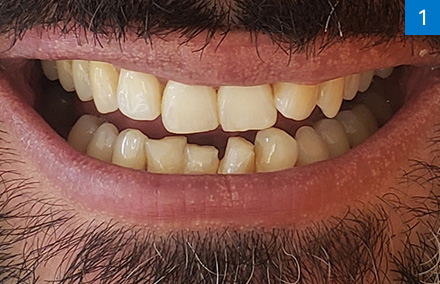
Because anterior tooth 32 was missing, tilting had occurred in the lower jaw.
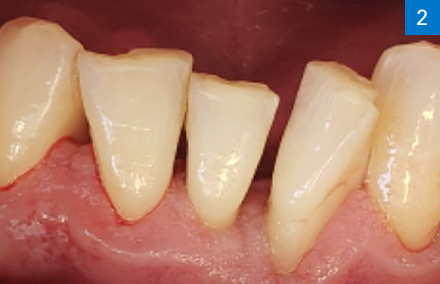
Because of a localized infection, the teeth were first cleaned professionally.
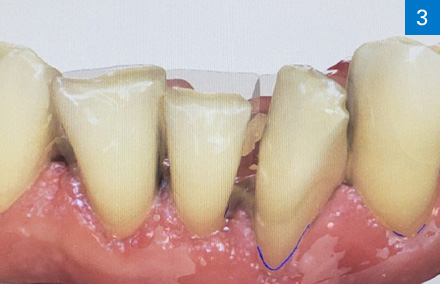
The lower jaw was scanned and a virtual model generated.
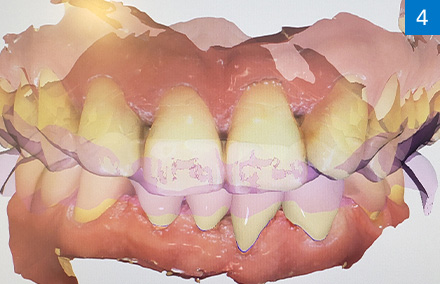
Virtual upper and lower jaw in articulation in CEREC Smile Design.
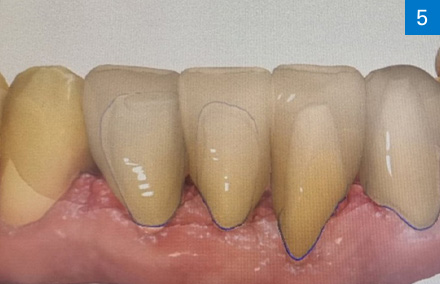
The restorations were constructed using CEREC Smile Design.
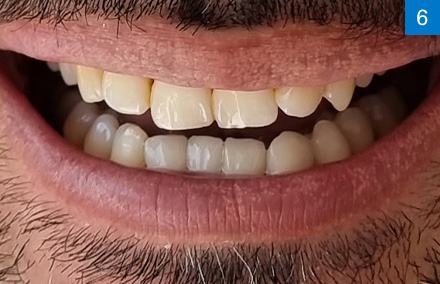
Seated restorations made from VITABLOCS TriLuxe forte on tooth 33, 31, 41 and 42.
China: VITABLOCS case: Dr. Jia Zhen

Dr. Jia Zhen, Dentist Chengdu, China, 10/21
"I've been using VITABLOCS successfully for eight years! With the esthetic restorations, I can put a satisfied smile on the faces of my patients – efficiently and reliably. I haven`t had a single dissatisfied patient yet."
A success story: Veneers made from VITABLOCS Mark II Bleach
Initial situation
A young patient presented with moderate tetracycline discoloration and exposed cervical areas, as well as abrasion to the incisal edges of the upper middle incisors. Following clinical and X-ray diagnostics, all teeth proved vital and asymptomatic, with a normal periodontium. The patient asked for a bright reconstruction of the visible tooth area.
Solution
Following preparation, the patient was fitted with 16 minimally-invasive veneers made of bleach-colored VITABLOCS MARK II material with a layer thickness of 0.8 to 0.9 mm. and no functional contacts.
Why VITABLOCS Mark II?
VITABLOCS offer lifelike shade effects, while also masking discolorations. The shade range is varied and enables selection of the appropriate block. The surface texture is similar to that of natural enamel. With VITABLOCS, dentists and dental technicians can predictably meet the different needs of patients.
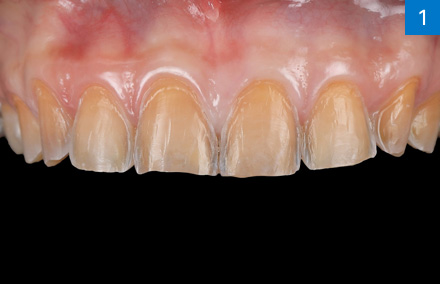
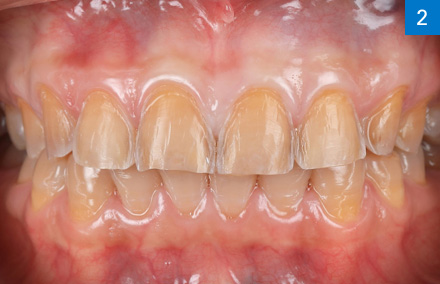
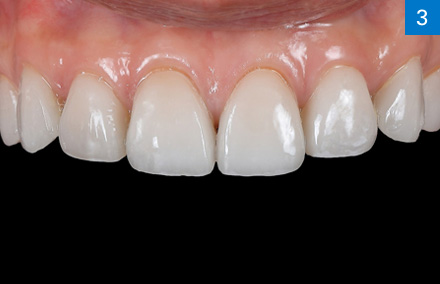
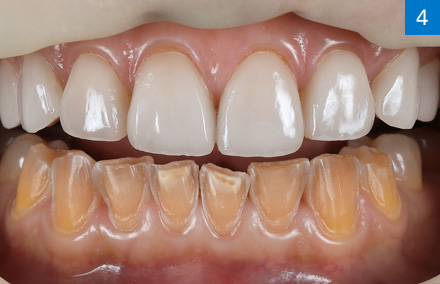
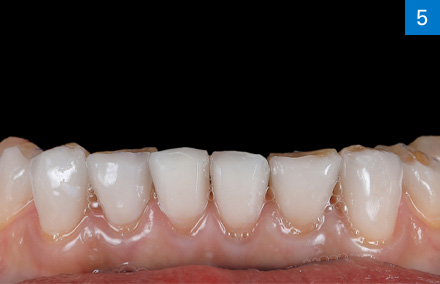
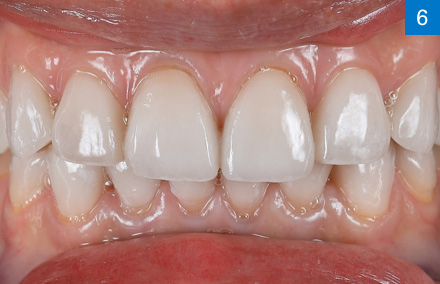
Italy: VITABLOCS case by Dr. Bonaudo
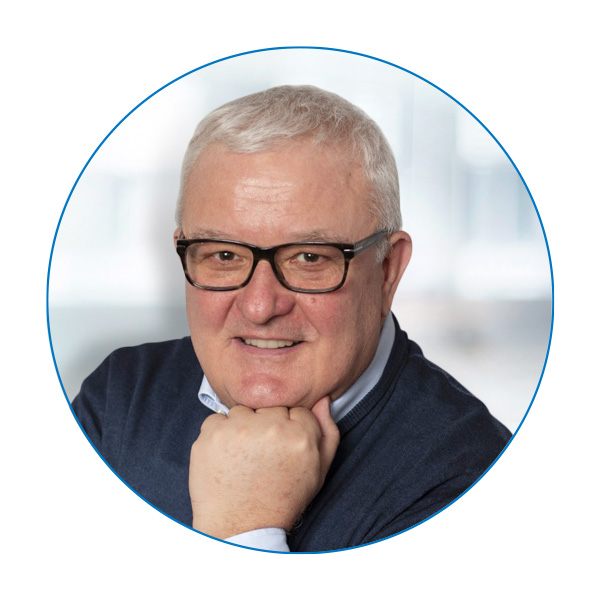
Dr. Diego Bonaudo, Dentist, Turin, Italy, 07/21
"I've trusted VITABLOCS since 2000. I would give VITABLOCS five stars because of its long-term stability and outstanding esthetic and biomechanical properties. Follow-up evaluations of my cases have demonstrated the durability of the material."
A success story: Anterior veneers made of VITABLOCS Mark II
Initial situation
A patient with pronounced malocclusion presented with irregular incisal edge and gingival margin contours. The middle upper incisors were fractured and discolored.
Solution
The crossbite was first treated with Invisalign. Following a mock-up simulation, a minimally-invasive laser gingivectomy was performed to harmonize the gingival margin, and preparation was carried out. The patient's esthetic zone was then restored in a single chairside session with veneers made of VITABLOCS Mark II.
Why VITABLOCS Mark II?
Because of the precise margins after milling and the natural translucency of the final restorations.
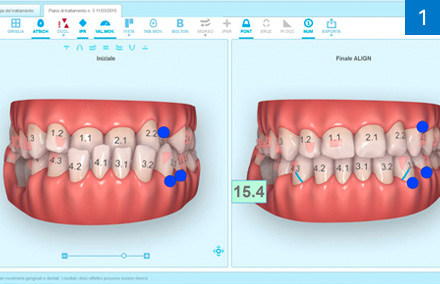
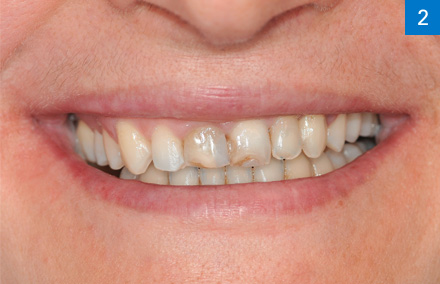
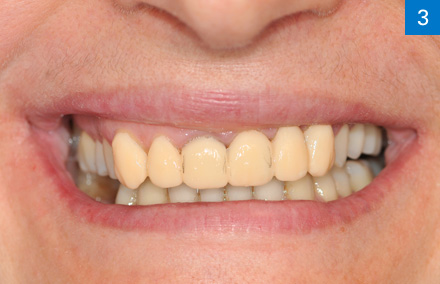
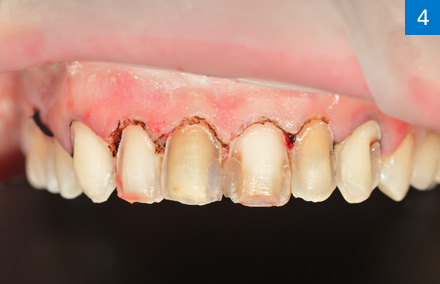
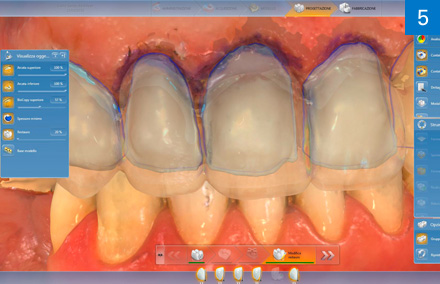
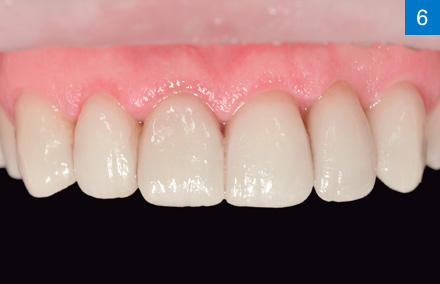
Kazakhstan: VITABLOCS case by Dr. Naidyonova

Dr. Oxana Naidyonova, Dentist, Karaganda, Kazakhstan, 07/21
"Using CEREC and VITABLOCS, I can easily create esthetic chairside restorations in a single session. I love VITABLOCS because of their bright, natural color, ease of use and outstanding esthetics."
A success story: Overlay with VITABLOCS Mark II
Initial situation
A young patient, 25-years-old, was unhappy about a defective older filling in upper molar 27.
Solution
The older filling was removed, secondary caries excavated, endodontic revision carried out and the tooth restored with an all-ceramic overlay made of VITABLOCS Mark II.
Why VITABLOCS Mark II?
We chose VITABLOCS Mark II because the abrasion (similar to enamel) harmonized with the natural antagonist, with regard to function, from a long-term clinical perspective.
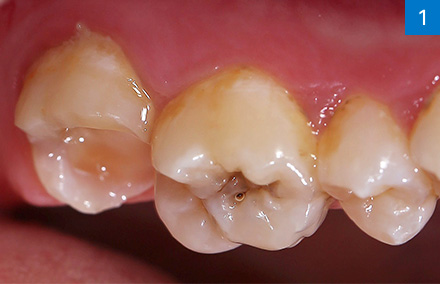
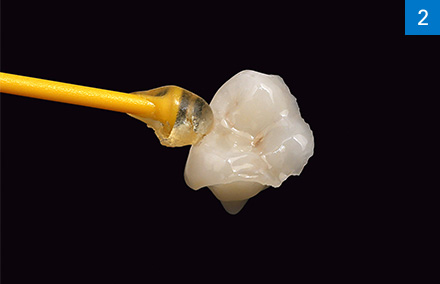
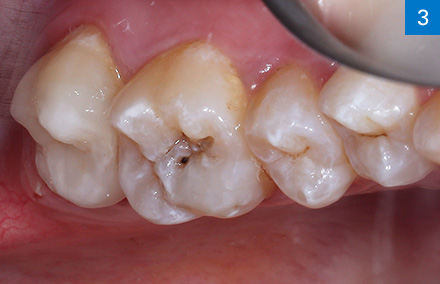
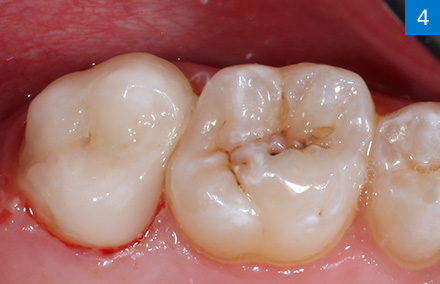
Argentina: VITABLOCS case by Dr. Gomez Paris

Dr. Julio Gomez Paris, Dentist and dental technician, Santa Fe, Argentina, 07/21
"VITABLOCS is my preferred block. Not just because of its quality, which has been proven over many years, but because it offers me the best esthetic and optical results, such as translucency and fluorescence similar to natural dentition."
A success story: Anterior veneer made of VITABLOCS Mark II
Initial situation
A young patient in her 20s with post-traumatic discoloration of the right upper middle incisor.
Solution
In order to achieve perfect esthetics, the desired shade of the adjacent, healthy and central tooth, as well as the discoloration of the prepared tooth surface, were taken into consideration when selecting the block. After the minimally-invasive preparation was scanned, a monolithic veneer was constructed using VITABLOCS Mark II 0M1 and milled.
Why VITABLOCS Mark II?
Due to the integrated natural esthetics, as well as the translucency and fluorescence of VITABLOCS feldspar ceramics that are similar to natural dentition, we achieve the best monolithic results using a digital workflow. In this case we needed to compensate the dark shade of the prepared tooth with 0M1 and chose VITABLOCS Mark II because this shade was not yet available for VITABLOCS TriLuxe forte at that time.
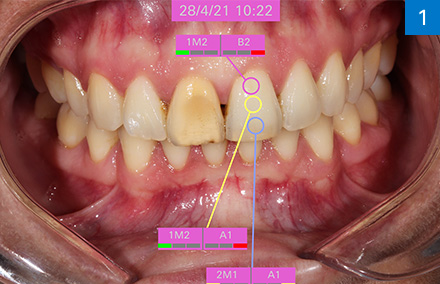
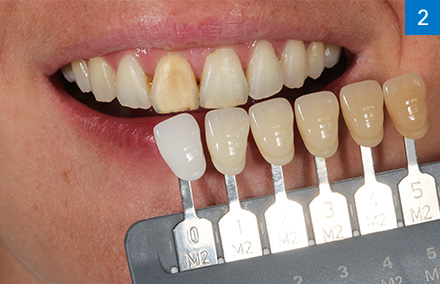
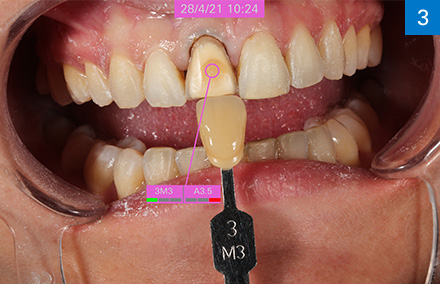
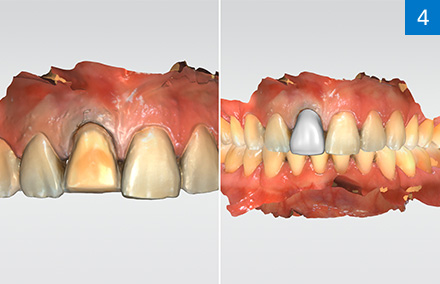
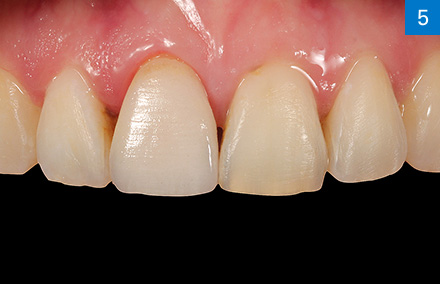
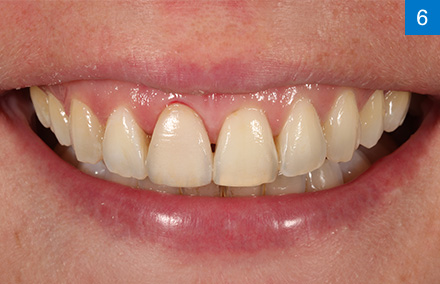
Spain: VITABLOCS case by Rafa Jaén

Rafa Jaén, Dental technician, Barcelona, Spain, 07/21
"I would give VITABLOCS five stars because the CAD/CAM process using the feldspar ceramic is both predictable and practical. That makes my daily work easier. VITABLOCS has been my material of choice since 2013 for restorations with loss of enamel. It allows me to achieve the perfect shade effect and give patients a natural smile."
A success story: Veneers made of VITABLOCS Mark II
Initial situation
Following orthodontic treatment, a young patient presented with discoloration, cracks and inadequate conservative restorations in the esthetic zone. The middle incisors seemed to be too short.
Solution
The patient was treated with 10 minimally-invasive veneers made of VITABLOCS MARK II. The restorations were planned using an idealized wax-up, which was placed in the patient's mouth as a mock-up and verified. This made fabrication of the final restorations predictable and simple.
Why VITABLOCS Mark II?
VITABLOCS allowed for minimally-invasive treatment in the enamel area as part of the digital workflow.
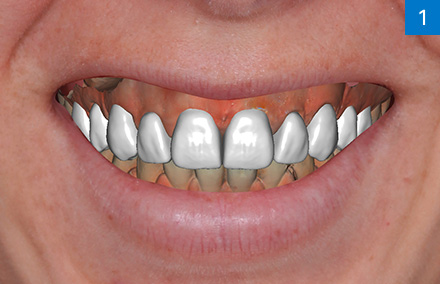
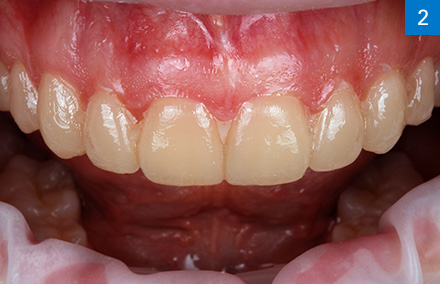
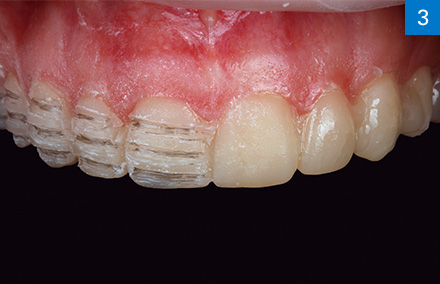
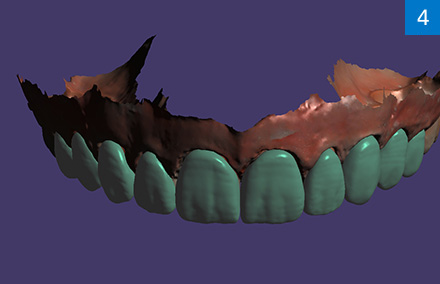
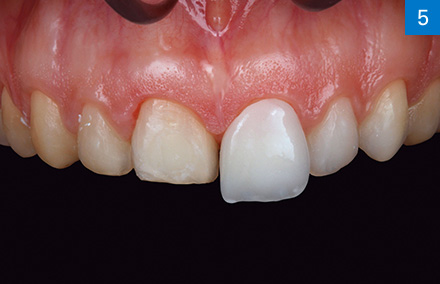
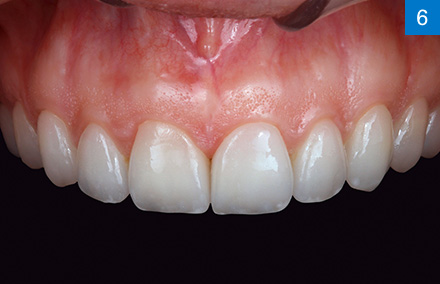
Russia: VITABLOCS case from Dr. Belous

Dr. Stas Belous, Dentist, Ulyanovsk, Russia, 07/21
"I would give VITABLOCS five stars because it’s easy to work with and offers reproducible results. A restoration can be brightened in just two to three hours. The realistic, natural esthetics, especially in the anterior region, are a great source of satisfaction! The realistic, natural esthetics, especially in the anterior region, are a great source of satisfaction!"
A success story: Crowns made from VITABLOCS Mark II
Initial situation
A young patient presented with discolored, non-vital upper incisors with insufficient composite fillings.
Solution
First, endodontic treatment was carried out on tooth 11, 12, 21 and 22. These were also stabilized with fiberglass posts and composite abutments. The natural teeth were then lightened by bleaching. Following wax-up and corresponding mock-up preparation, the tooth stumps were scanned intraorally, and temporary VITA CAD-Temp crowns fabricated using CAD/CAM technology to simulate the shape and function of the planned ceramic restorations. After successful try-in, the permanent ceramic crowns were fabricated monolithically from the VITABLOCS Mark II feldspar ceramic using a digital workflow.
Why VITABLOCS Mark II?
VITABLOCS Mark II offers both pronounced brightness and also good coverage, which is essential when working with non-vital and discolored teeth. Thanks to the optical properties, the tooth can be reconstructed with a natural appearance.
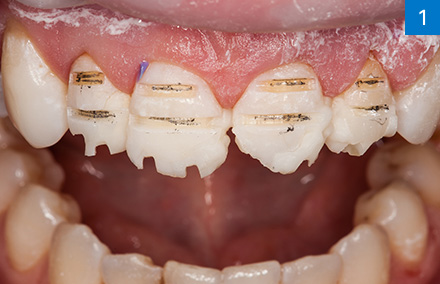
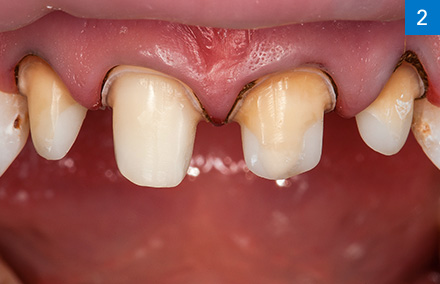
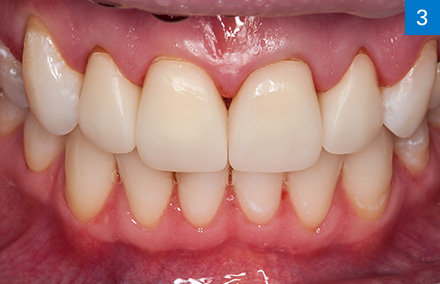
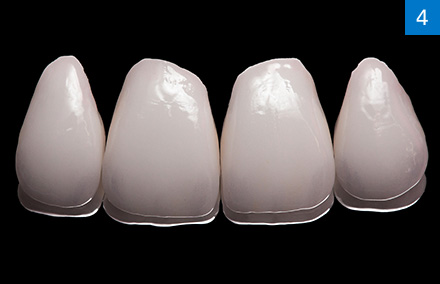
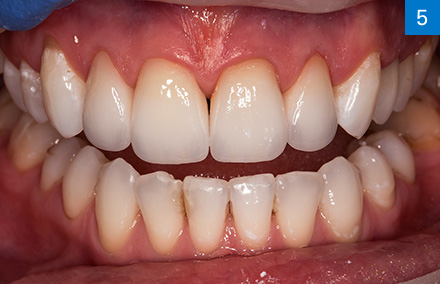
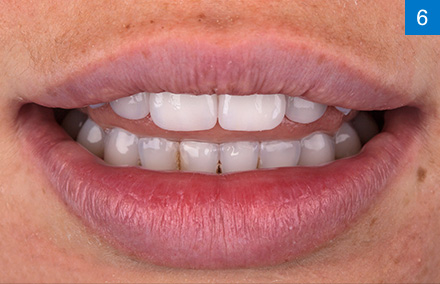
Indonesia: VITABLOCS case from Dr. Halim

Dr. Ignatius Ronny Halim, Dentist, Jakarta, Indonesia, 07/21
"Thanks to the wide selection of shades for the monochromatic or polychromatic blocks, I always achieve the right result. Five stars because VITABLOCS deliver a natural, esthetic result and are a reliable and competitively-priced material. My patients are very happy with the natural esthetics and long-lasting results of VITABLOCS."
A success story: two-unit anterior crown restoration with VITABLOCS TriLuxe Forte
Initial situation
A patient presented with composite restorations of tooth 11 and tooth 21 that, after six years, had become severely abraded and had faded as a result of daily cleaning. For this reason, the incisors were to be reconstructed using all-ceramics, with lasting prevention of further loss of incisal substance.
Solution
To begin with, an intraoral mock-up was fabricated using composite to simulate the planned final result with the patient. The mock-up was worn as part of a try-in for two days. The patient was satisfied with the shape and function. As a result, both teeth could be prepared using the mock-up and scanned intraorally, and final crowns fabricated monolithically using VITABLOCS TriLuxe forte and seated adhesively.
Why VITABLOCS TriLuxe Forte?
The polychromatic feldspar ceramic VITABLOCS TriLuxe forte was selected as the restoration material. Thanks to the integrated shade gradient, highly esthetic monolithic restorations could be created that harmonized with the natural hard tooth substance. The VITABLOCS feldspar ceramic guaranteed long-term stability and abrasion properties similar to enamel. The restorations have been in the patient’s mouth for six years. Abrasion is stable and there have not been any complications.

